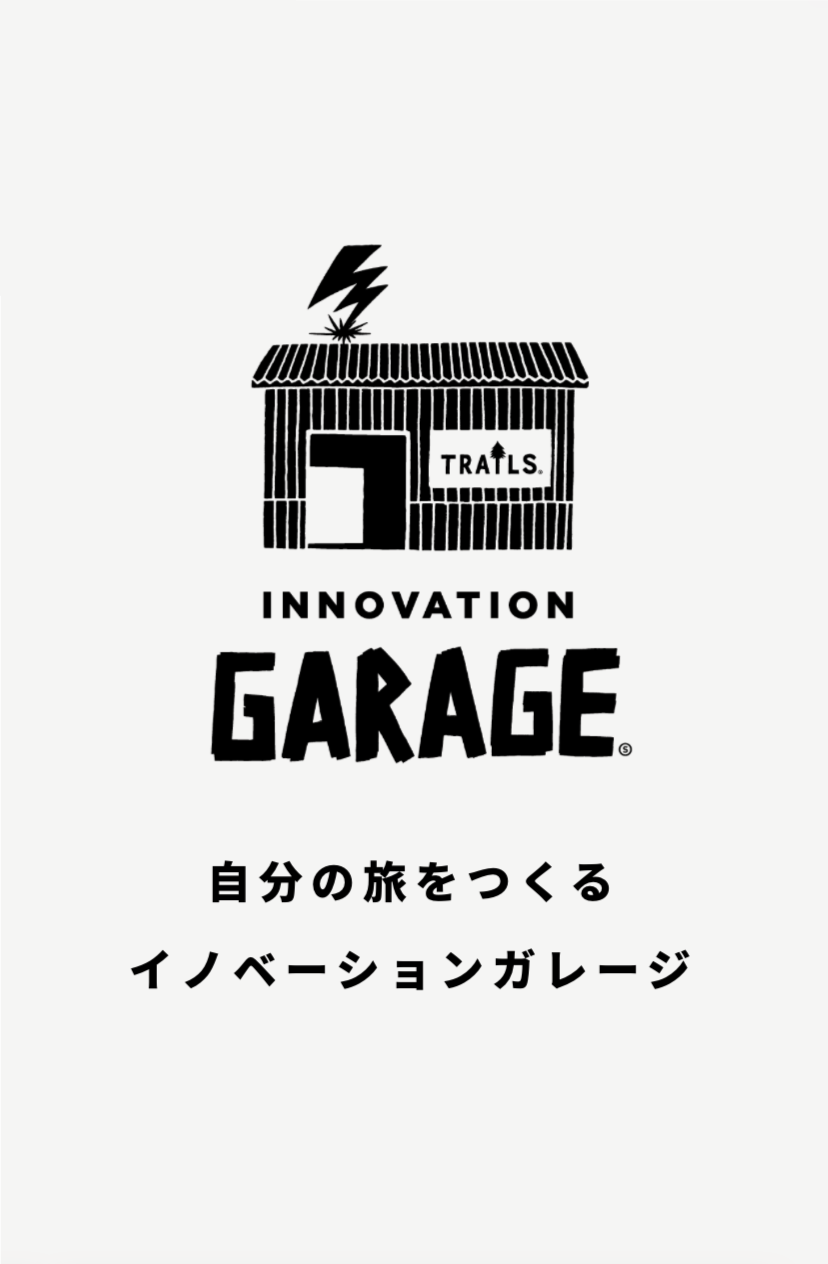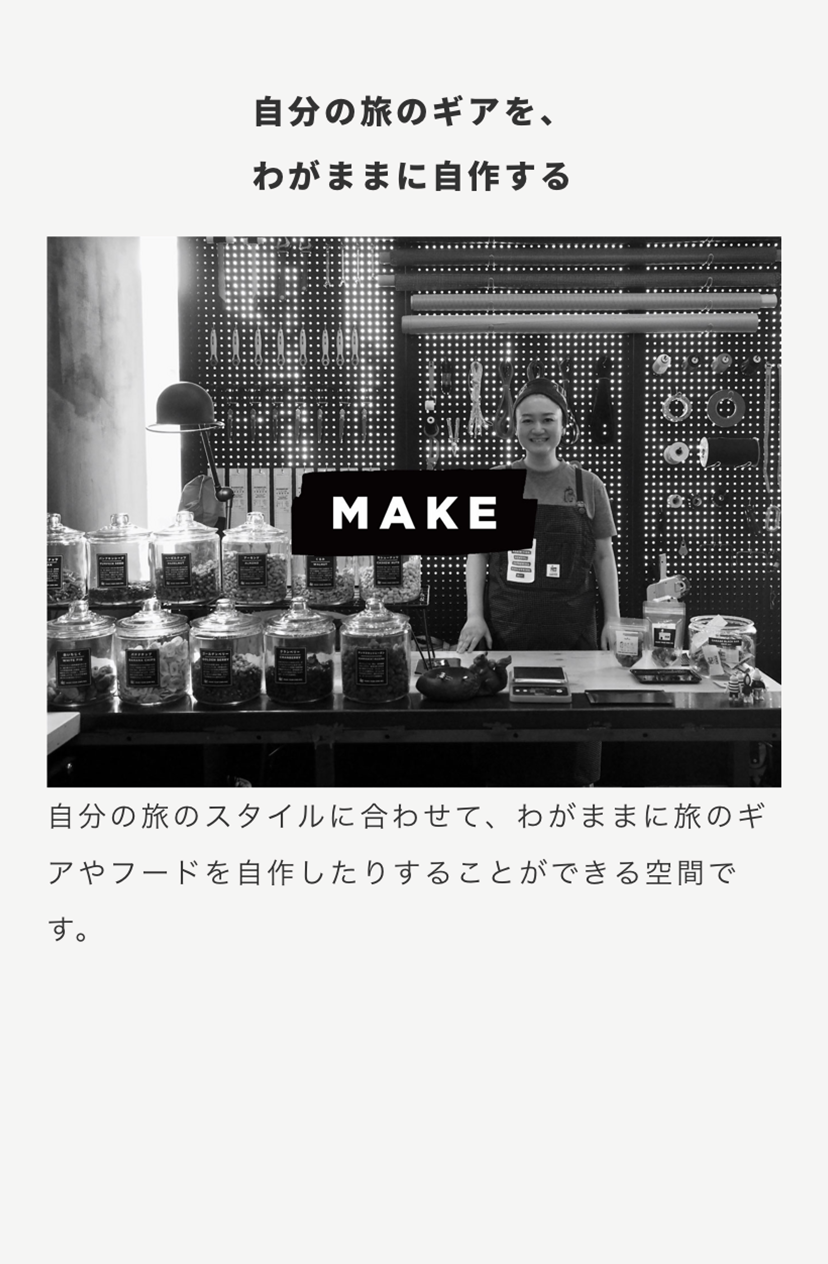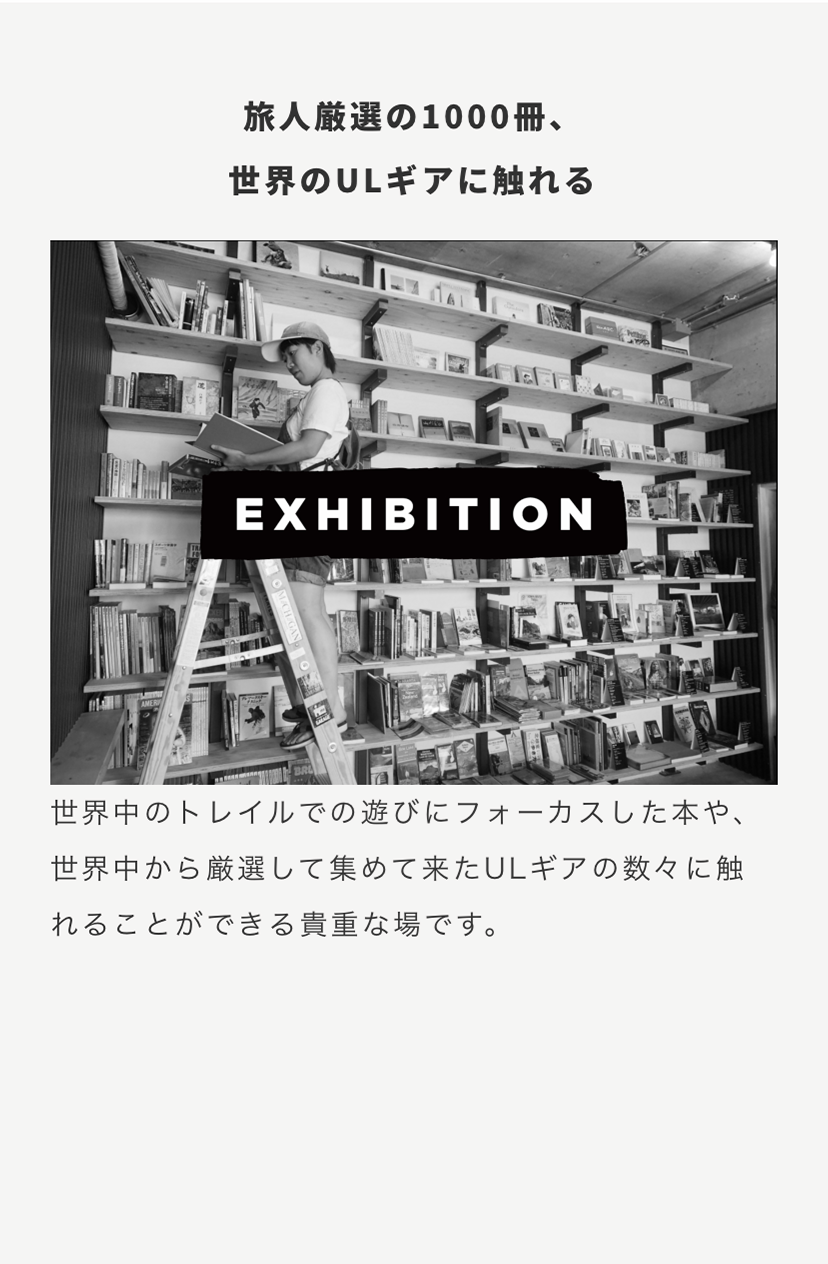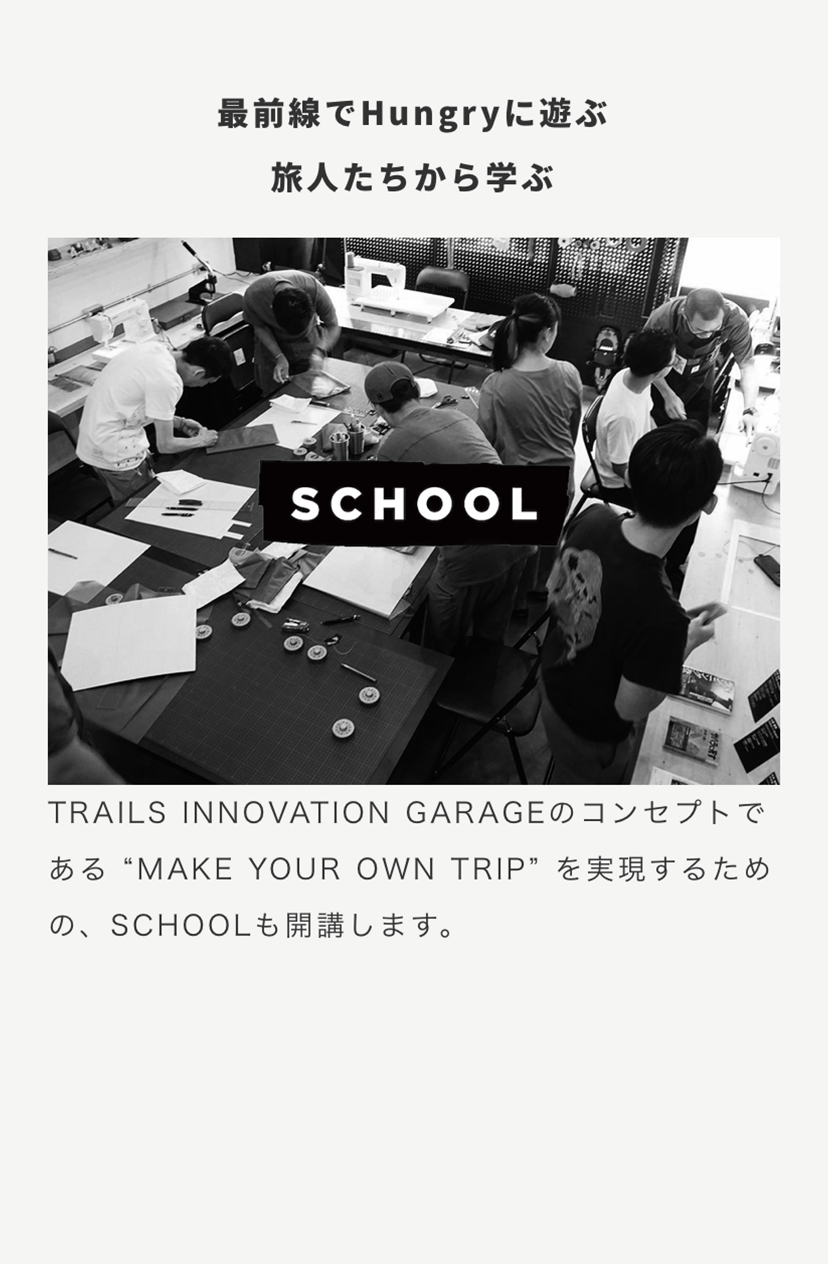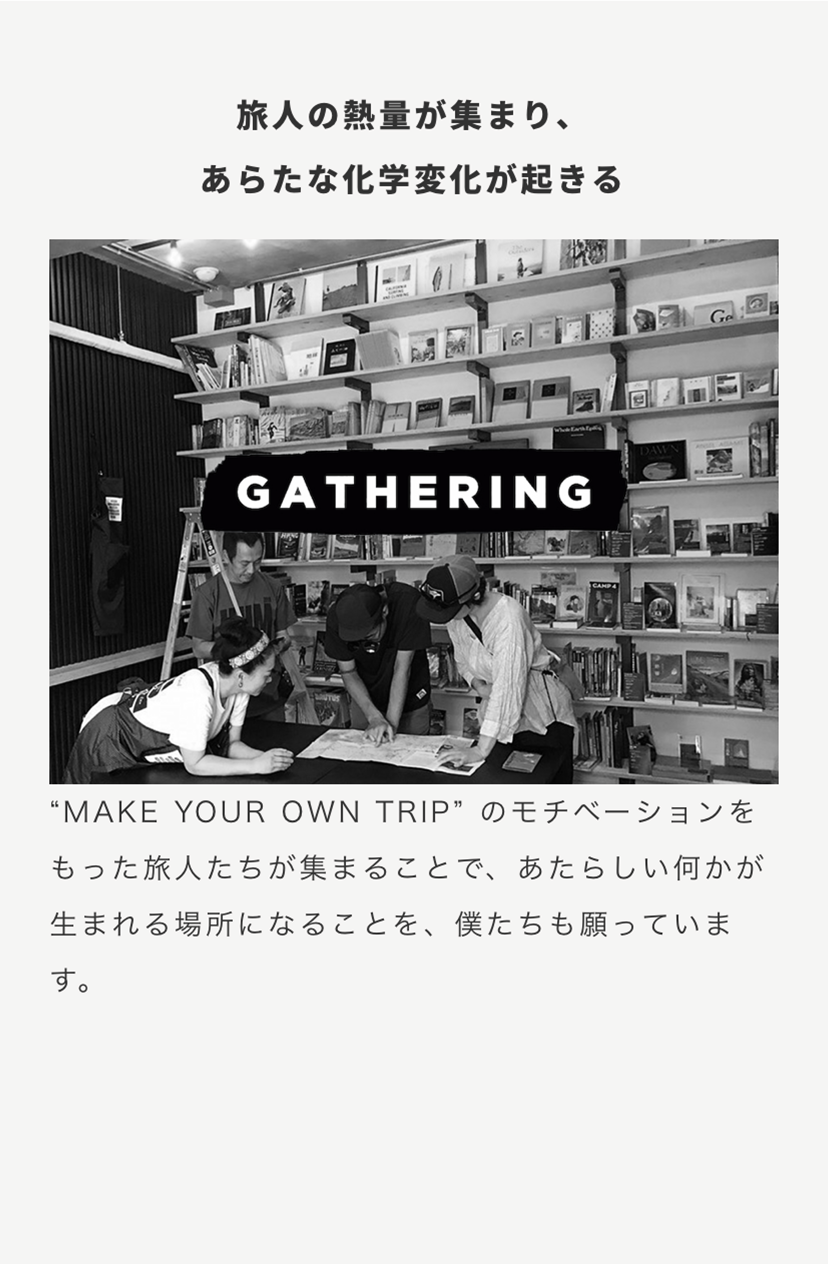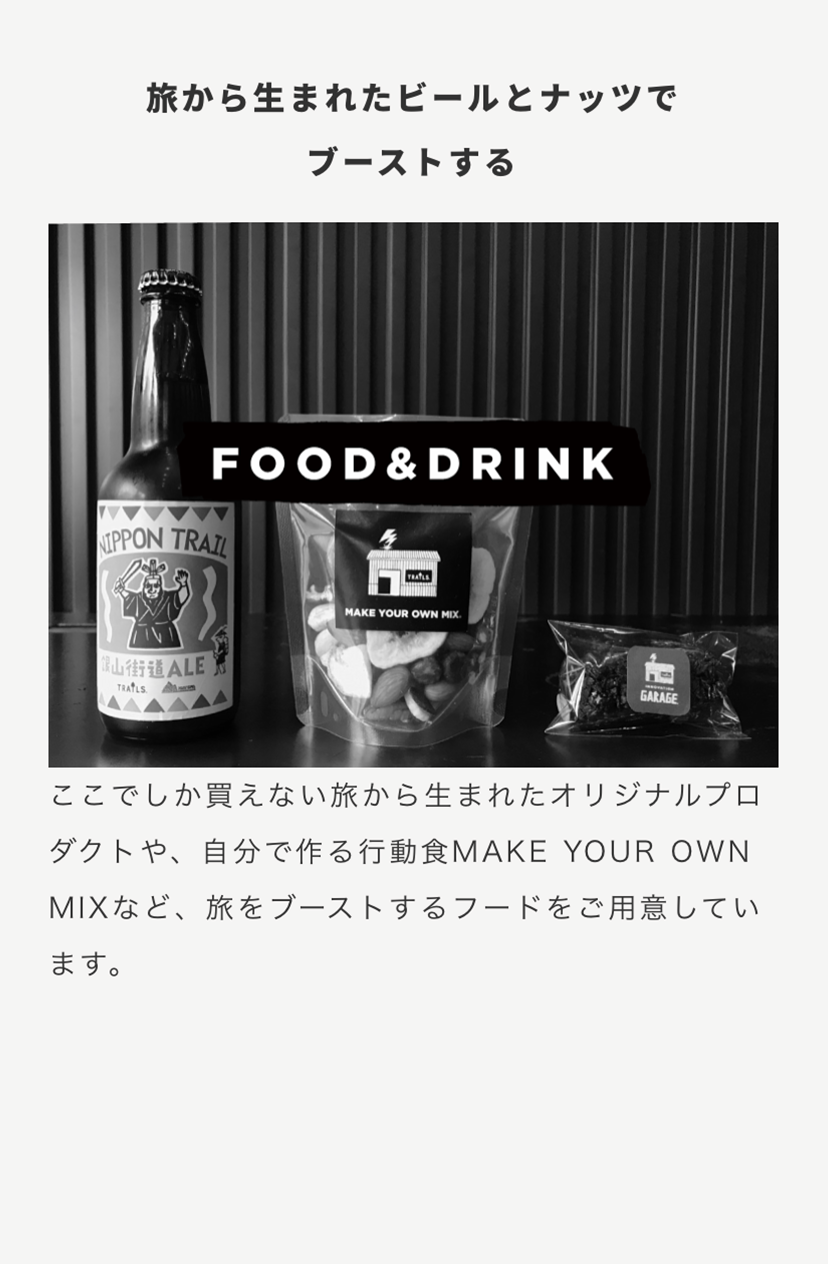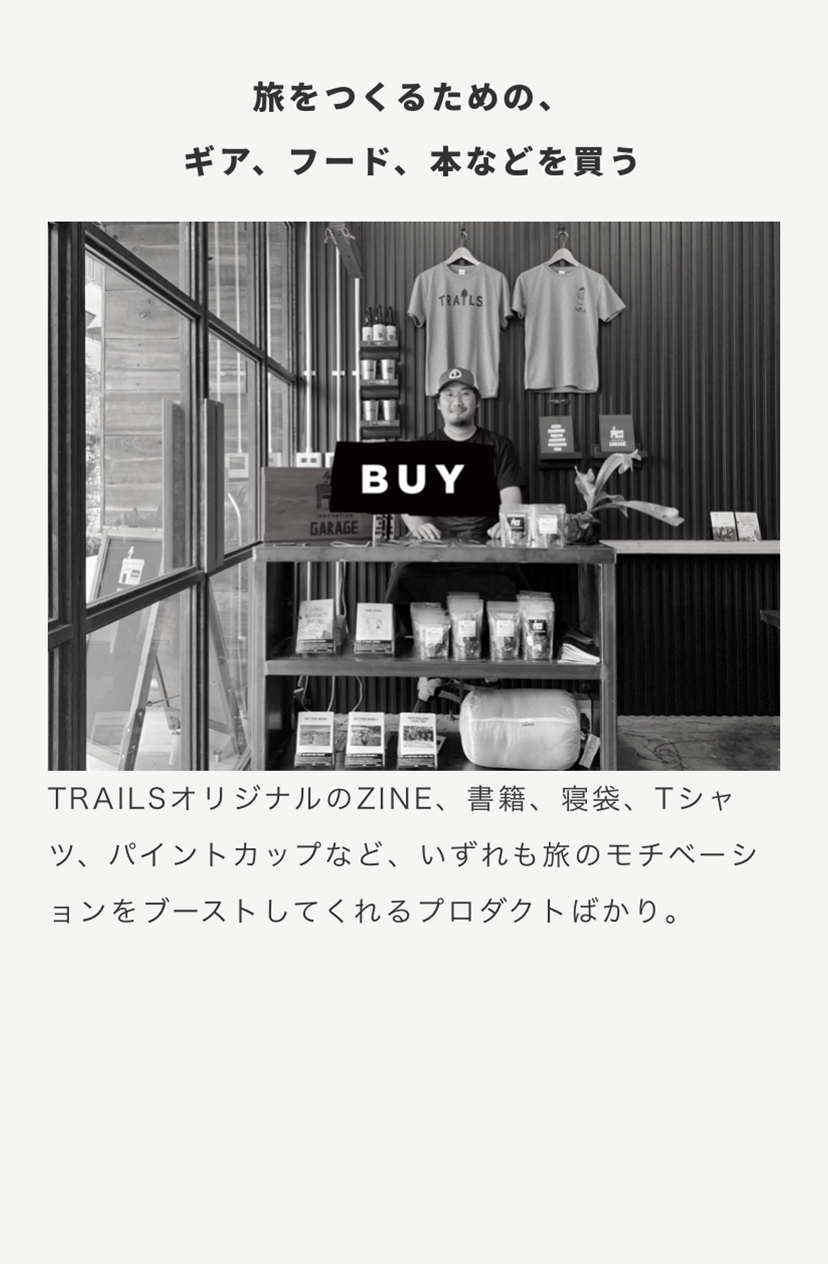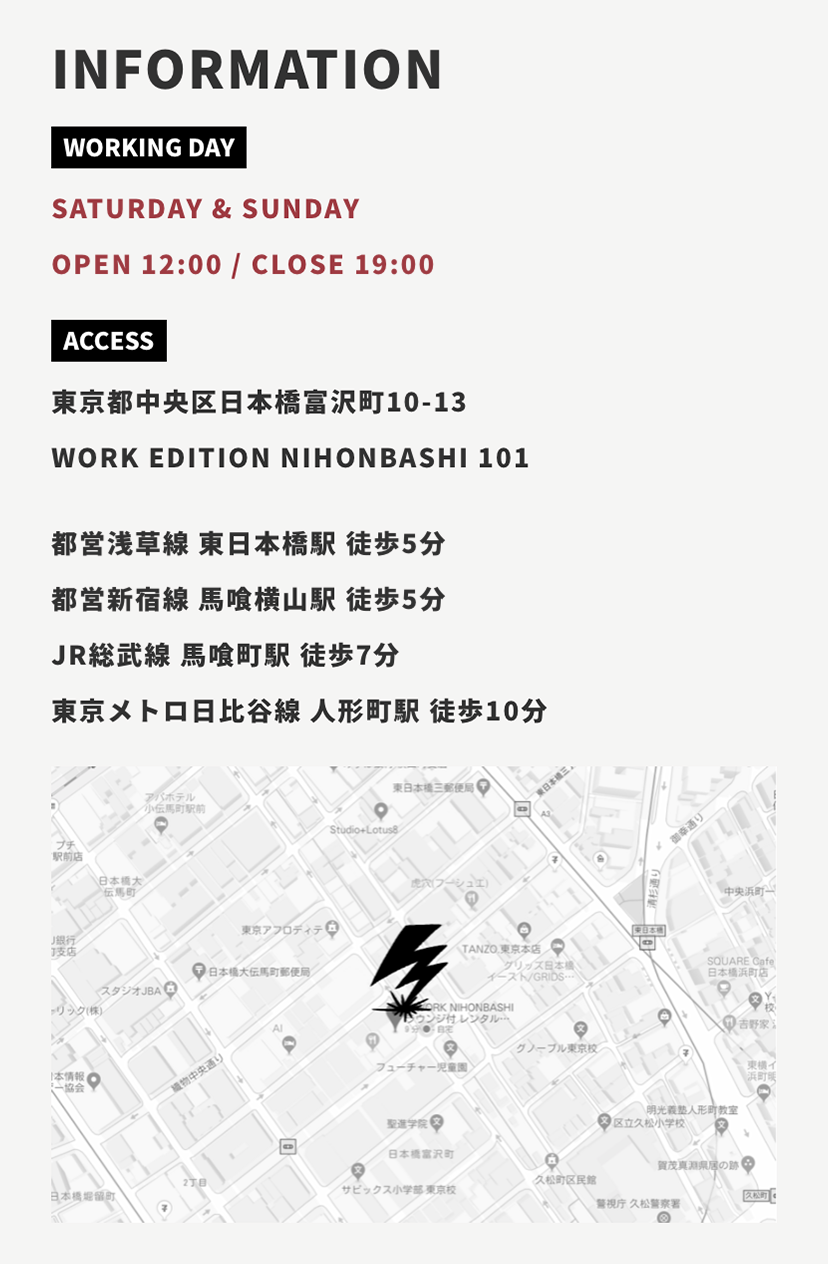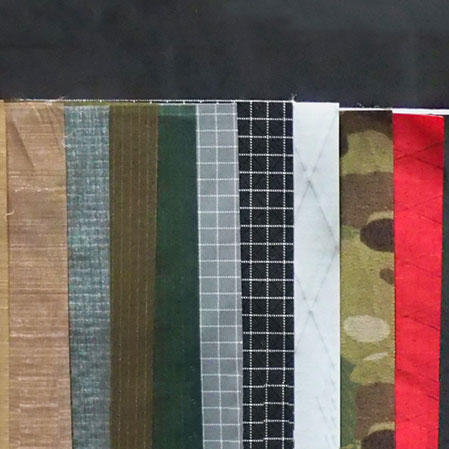パックラフト・アディクト | #54 クロアチア、美しい滝が集まる3つの川をめぐる旅(後編)
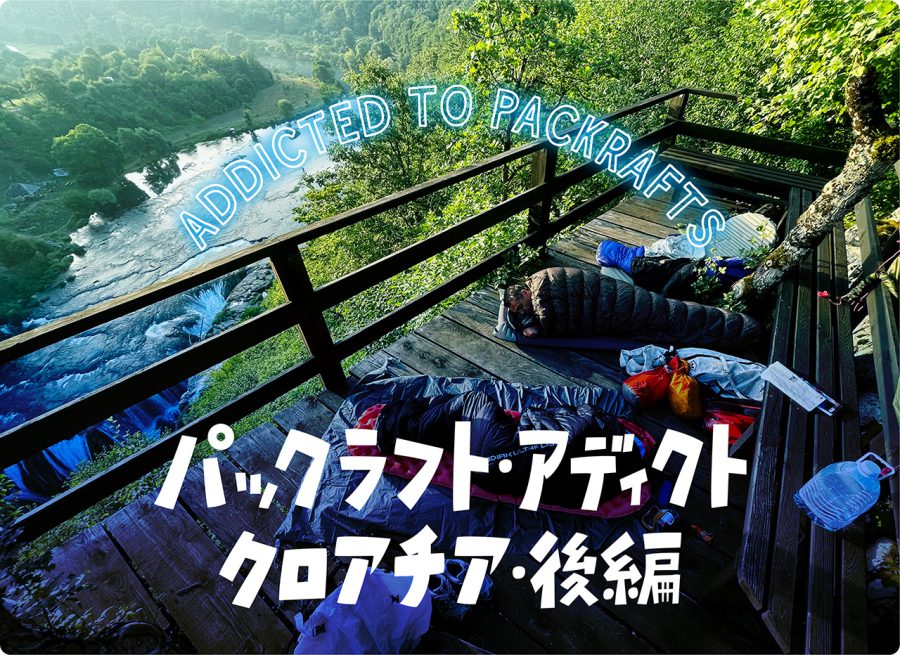
Summer Packrafting Adventure in Croatia (Part 2)
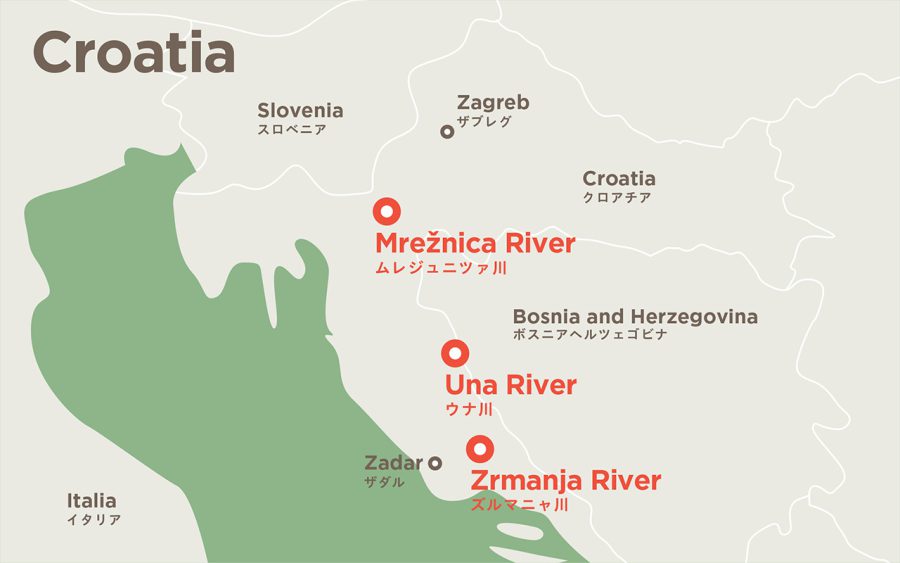
The Una is a very strong river with a big difference in altitude. While it starts in Croatia, near the village of Donja Suvaja, it quickly becomes a boarder river between Croatia and Bosnia and Herzegovina, flowing for 212 kilometers, before joining the Sava River. While the course of the Una can be divided into three parts, its upper course, while being the shortest, is the most interesting one.
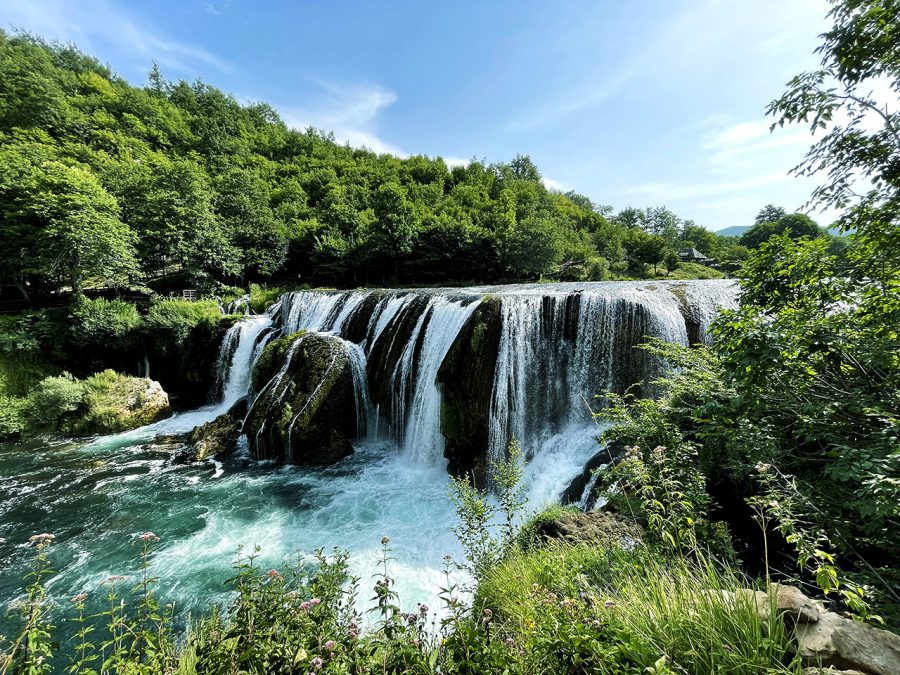
Here, the Una drops 154 meters over a distance of 66.5 km while flowing through deep valleys and gorges. A large part of this section on the Bosnian side forms the Una National Park, the largest national park in the country. The river here is also characterized by its relatively untouched nature, and a multiple rapids and waterfalls, the biggest of which is the Štrbački Buk (24 meters).
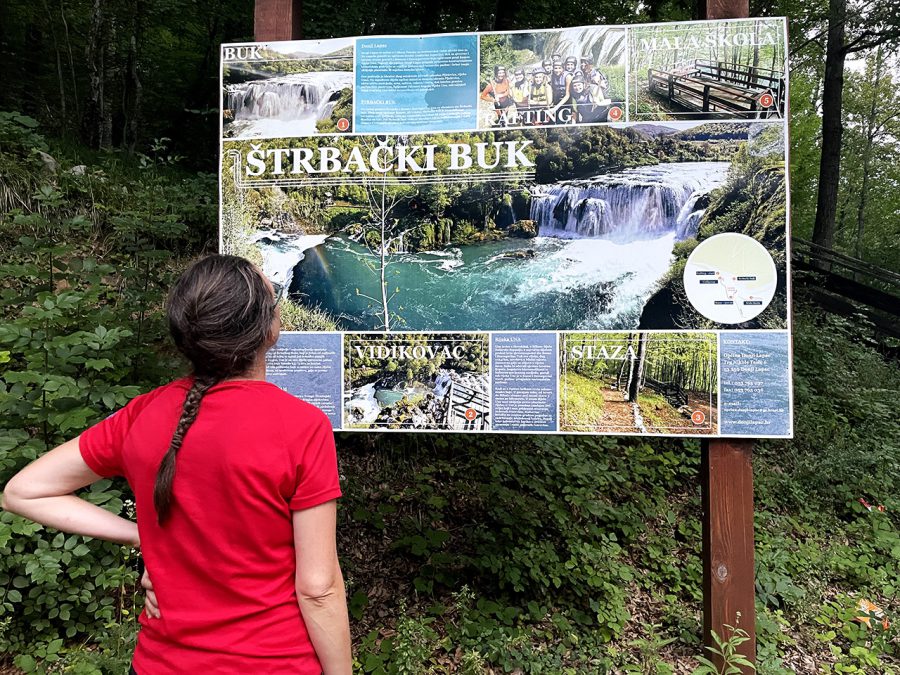
“If you want to paddle the Una, you should go to Štrbački Buk,” a kayaking guide told me when we were looking for ideas for where to go next (please see the previous part). “Drive to Donji Štrbci and just follow the road to the end,” he added. And that was exactly what we did.
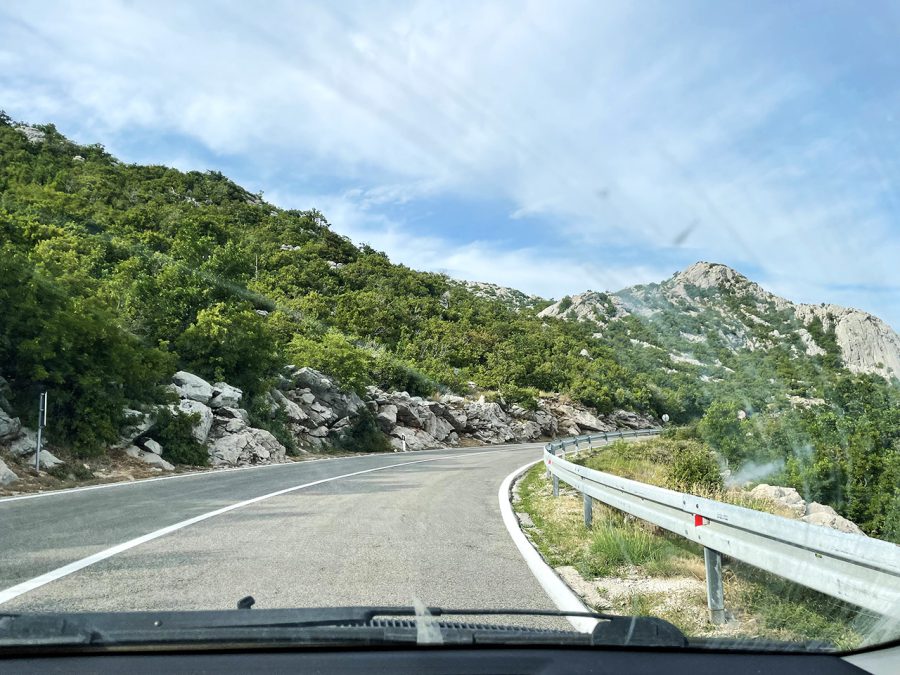
Having left the Zrmanja, we drove over the Velebit mountains, leaving the arid Mediterranean landscape and entering lush arable valleys and plateaus of Croatian inlands. It took us over 2.5 hours to get there, and by the time we reached the village of Donji Štrbci, it was time to think about finding a place to camp for the night. Our idea was to stay at a camping in the village that we found on Google Maps. However, when we go there, there seemed to be no trace of the camping at all.
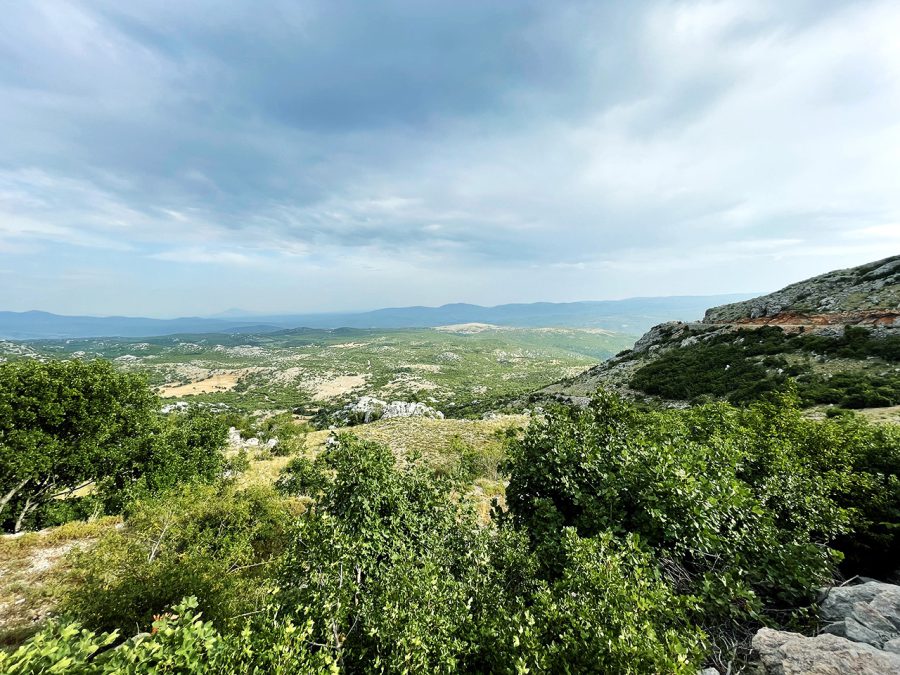
The village itself looked rather empty with the exception of one house, next to which a large multigenerational family were having a party, several cars with Serbian or Croatian numberplates parked in front of the building. (“It looks like they are visiting the family at the ancestorial property,” Živa explained later to us. In the past, Serbia, Bosnia and Croatia were all part of one country, Yugoslavia, and there are still many families that live or have properties across the borders. Živa herself was born in Yugoslavia, but Slovenia got its independence in 1991 after a ten-day war. The other counties were not so lucky, and the military conflict lasted for years.)
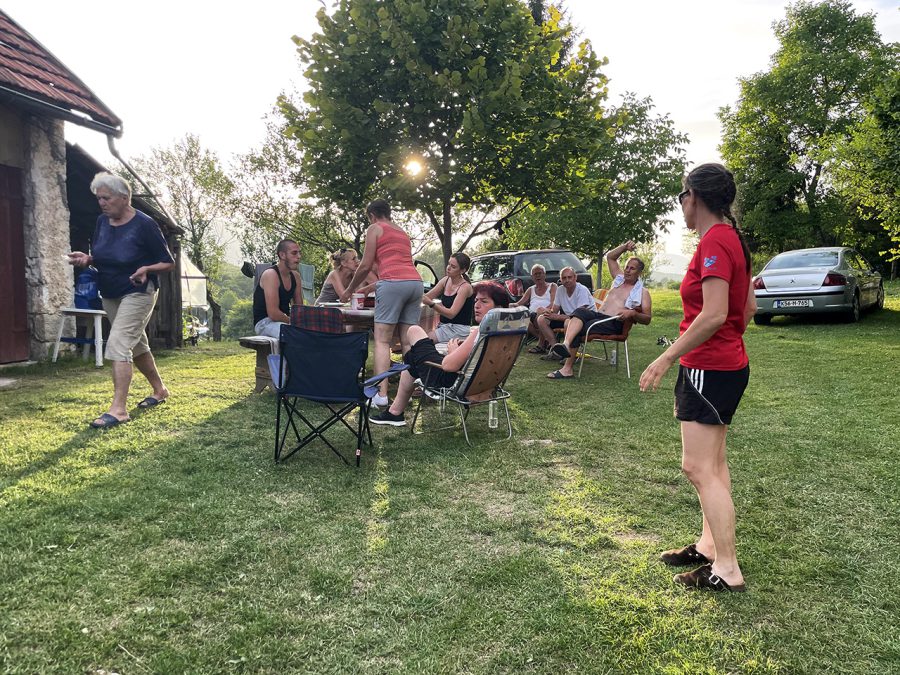
We asked the people about the camping. They laughed and suggested to go down to the waterfall, where we should find the ‘owners of the camping’. “At this time they should be there,” they told us.
The road down was not paved and rather bumpy. It zigzagged its way down a steep hillside towards the river, next to which a disused railway track ran. A small path next to the rive led to an old watermill next to Štrbački Buk waterfall. As it turned out the mill and the area around belonged to the people we were looking for – they literally own the Croatian side of the waterfall, while the Bosnian side is part of a National Park.
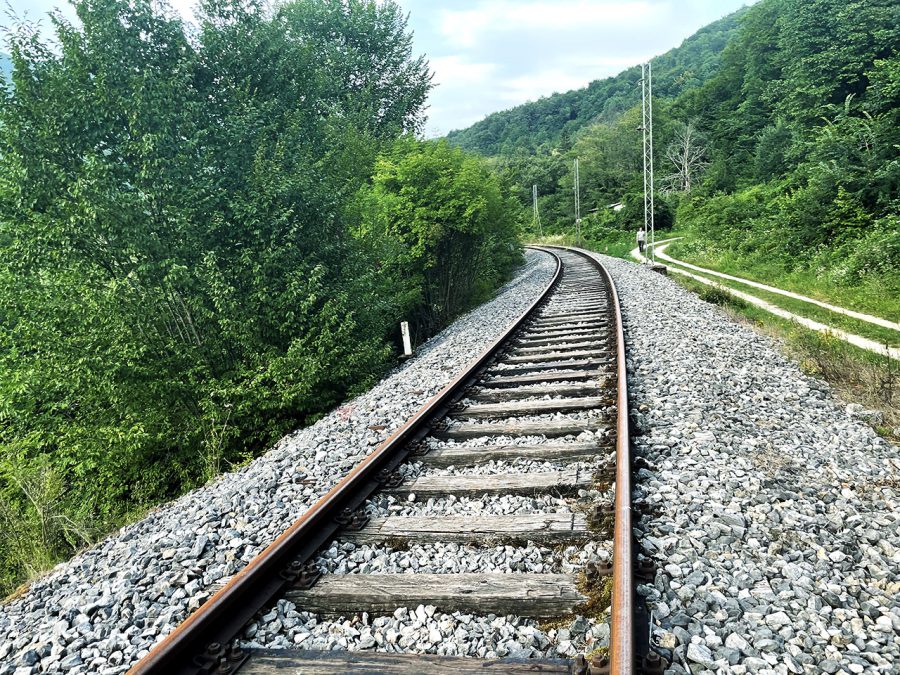
When asked about the campsite, they said that there was none (and it had never existed) but offered us to put out tents next to their house up in the village.
Remembering the quality of the road, Živa said that she was sorry for her ‘little Toyota’ and would prefer to camp wild instead of going up and then down the next day again. That is why we found a place in the woods just a bit further up, not far from the start of what looked like a small hiking trail.
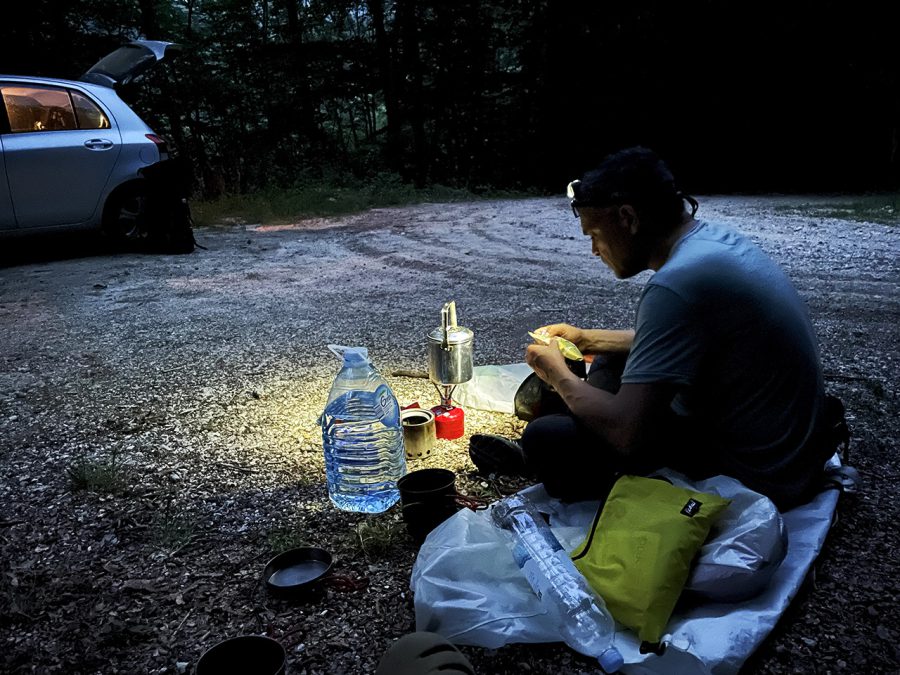
It was not a perfect place, but as it started to get dark, we had to make do with what we had. We also did not feel completely comfortable walking in the woods as Remi correctly reminded us that it was not really advised to go off the train in Croatia. The reason for it are the landmines, what are left over from the 1990s Yugoslav war.
It is believed that there are still around 17,000 unexploded mines scattered around the county. And while some areas where you can come across them have been marked, there are still some places where they are not and there have been more than 200 people who have been killed by them since the war. (The most recent one was this spring.) While we were setting up the tents, we say the lights of the car of the ‘campsite-owners turned waterfall-owners’ passing by.
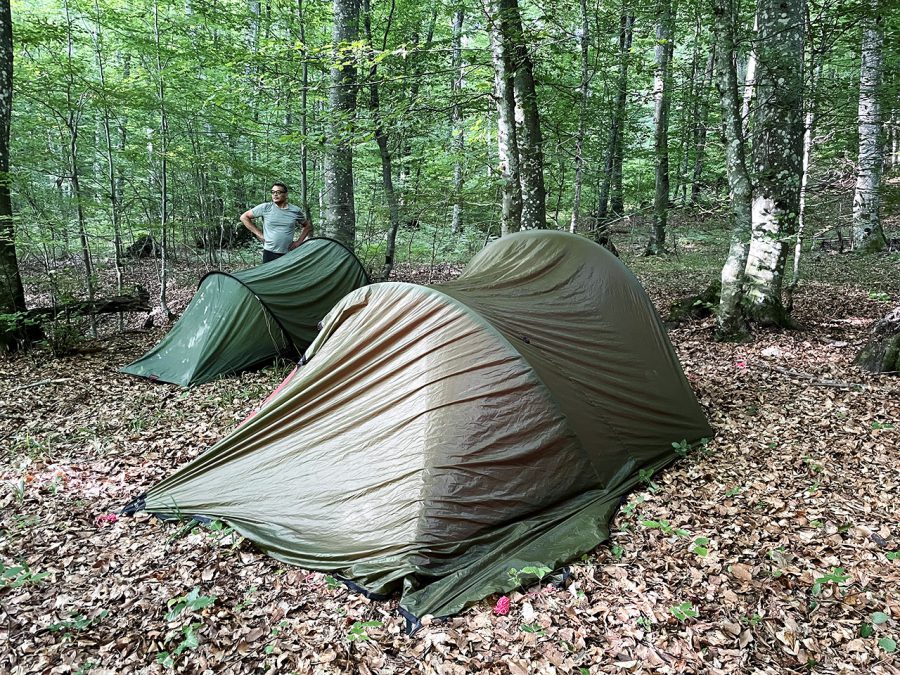
The next morning, we decided to see if we wanted to paddle the river. According to some information we found on the Internet, this section below the Štrbački Buk and up to a place called Lohovo was the rafting section, the difficulty of which at the high water in April and May could reach Class V. During a medium water level period, the river difficulty level was said to be III and IV, which were still too high for us (none of us is a class-IV paddler). That was why we first wanted to see if we could actually paddle it and if there were ways to escape from the river should the level prove to be too much for us.
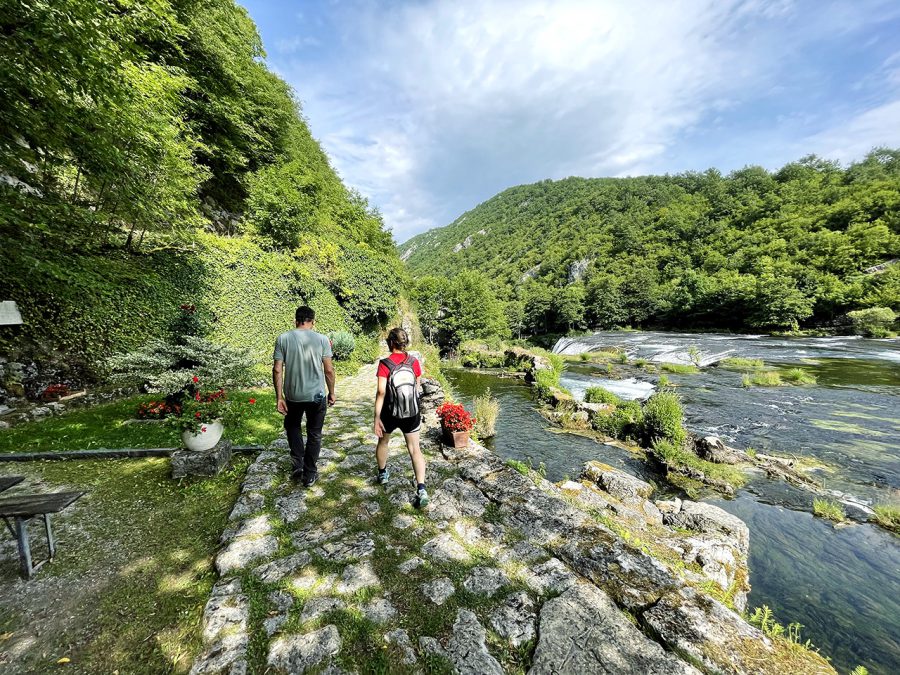
To do that we walked along the disused railway track from time to time climbing down to the river to have a better look – it was not possible to see much from above. Walking on the tracks was not easy for me as the distance between the rail sleepers was shorter than my regular pace which made it very unnatural and required a lot of concentration. On the way, we also passed through a couple of tunnels, which were very dark – good thing Remi had his headlamp with him. (Interestingly, walking in tunnels was easier as the rail sleepers were made of iron, had rounded edges, and were buried a bit deeper.
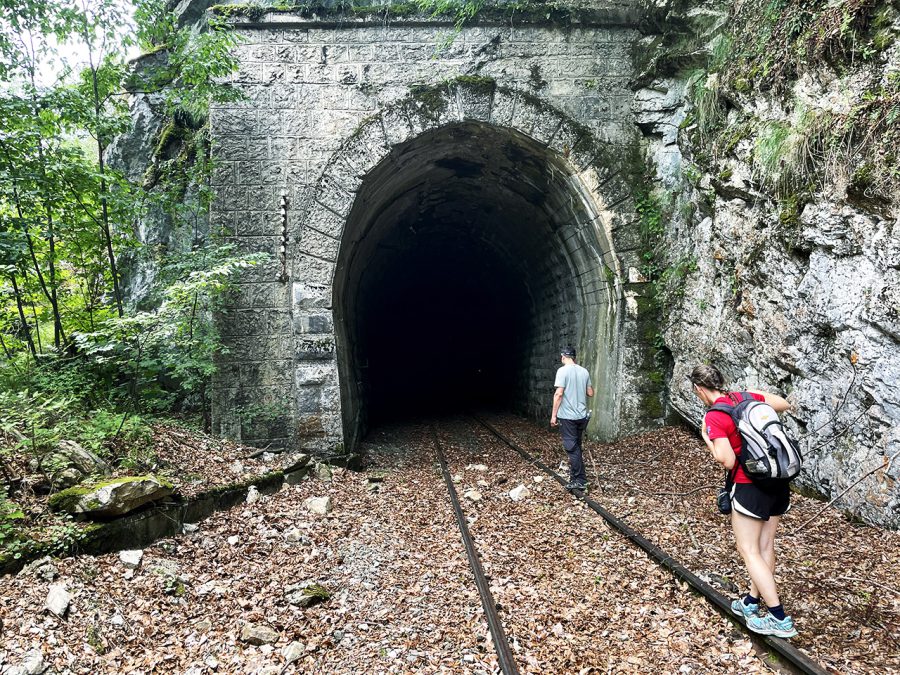
Though we could not see much as the river was meandering through the canyon, from what was visible, it seemed that the water level was rather low and that most of the rapids and drops were something that we could take on. At least that was what Remi and I thought. Živa was not so sure. That’s why we decided that the two of us would go paddling down the Una, while she would wait for us next to the falls. “I know that I would probably regret that later on,” she admitted.
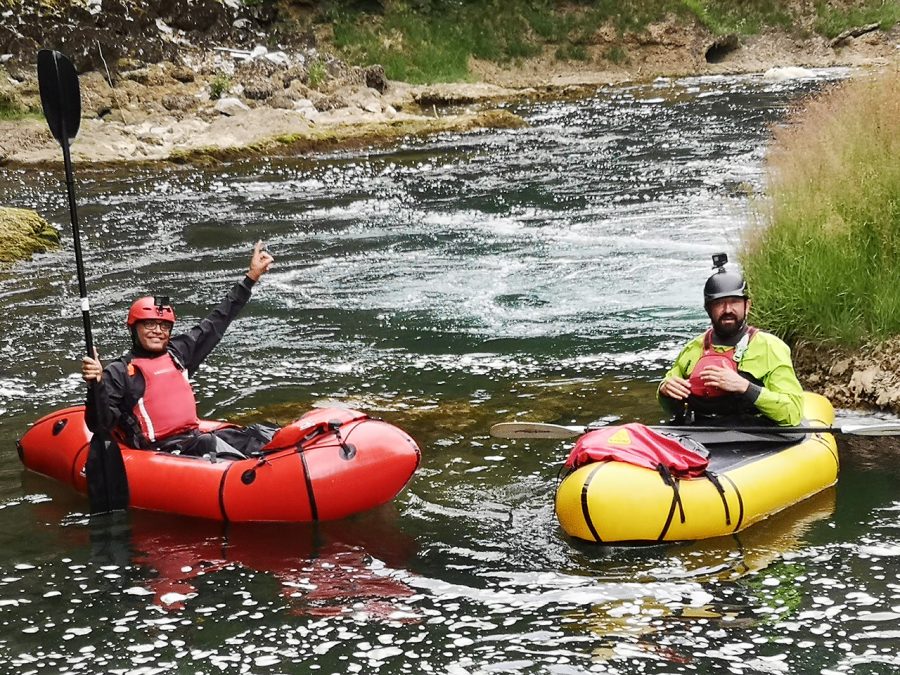
And so, we packed our stuff, hiked a short distance back along the railway track, and just before reaching the first tunnel, climbed down to the river along a small tack that was usually used by rafting companies to bring down the rafts (or so we heard). While we got our packrafts ready, Živa set a hammock up in the shade and got herself ready to wait for us.
When preparing for the trip, we were told that the Una is a “river with consequences” and that we should scout a lot. And that was what we did (as Remi had a self-bailer, he was mostly doing the scouting). Luckily for us, the water level was low, and it was possible to stop at each rapid to check the line.
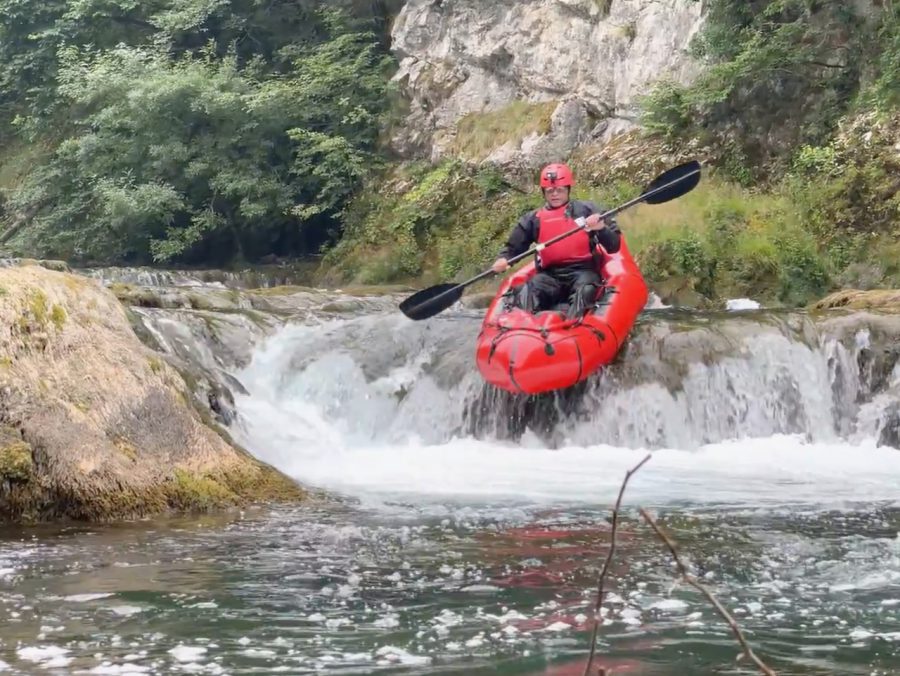
The rapids were mostly single drops with a clear main stream (at this water level) and pools under them. The drops varied in size, but none of them was as spectacular as the one that we jumped on the Zrmanja River the day before. (There were two rapids at which we took chicken lines. One of them did not have enough water in the main drop, and another was a bit too complex with a significantly higher level of consequences should anything have gone wrong – we thought it was not worth risking it.
In the end, we spent just over two hours paddling and covered around four kilometers, but it was worth it. The sheer number and the variety of the rapids as well as the beautiful setting made it an exciting trip.
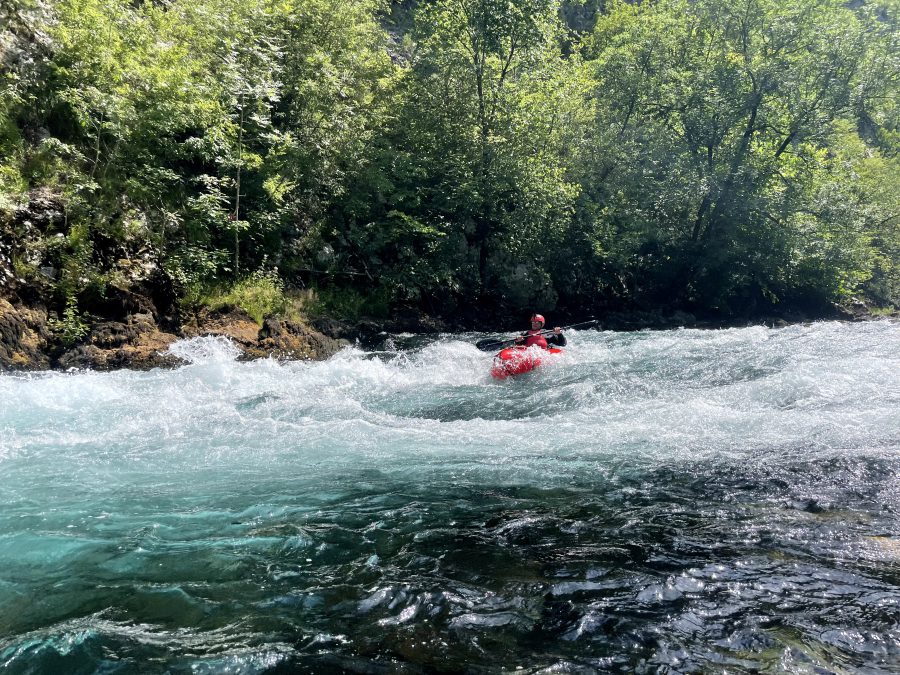
We did not actually know the exact distance we packrafted that day as we could not get any internet on our phones, and we did not know where we had to step out exactly anyways. What we had heard was that it would be at the end of the canyon. That is why, at one point, when the river got broader, the valley opened up a bit, and we saw the railway tack a short distance above us, we decided to stop paddling, pack and walk back.
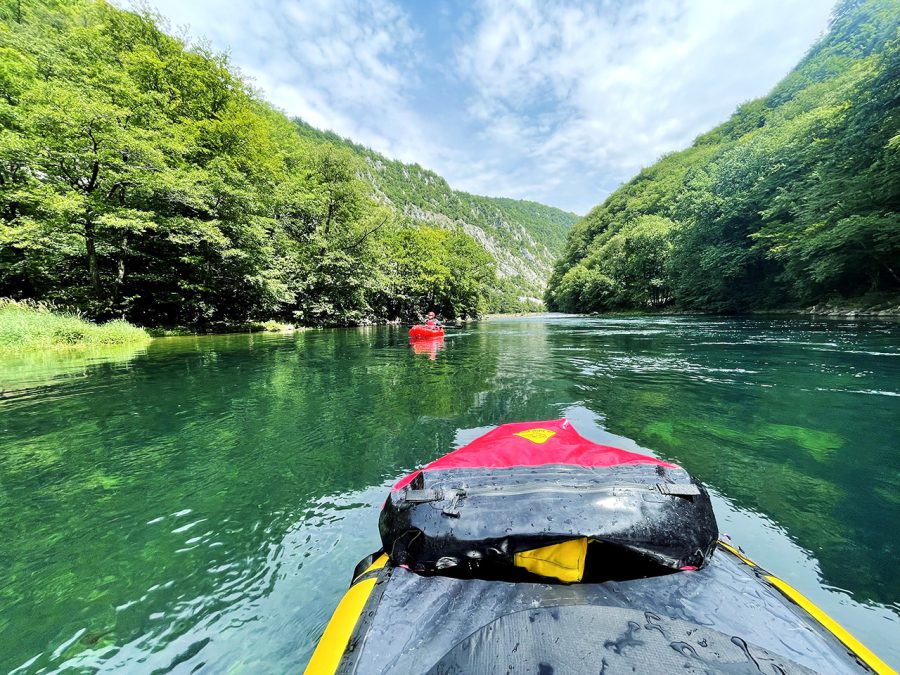
It took us over an hour to get back to the waterfall where Živa was waiting for us. This time, however, I was ready for the tunnels as well – I had my headlamp with me.
Seeing how excited Remi and I were about the section, Živa said that she would also love to paddle it if only we agreed to stay for one day longer and do it again. We did.
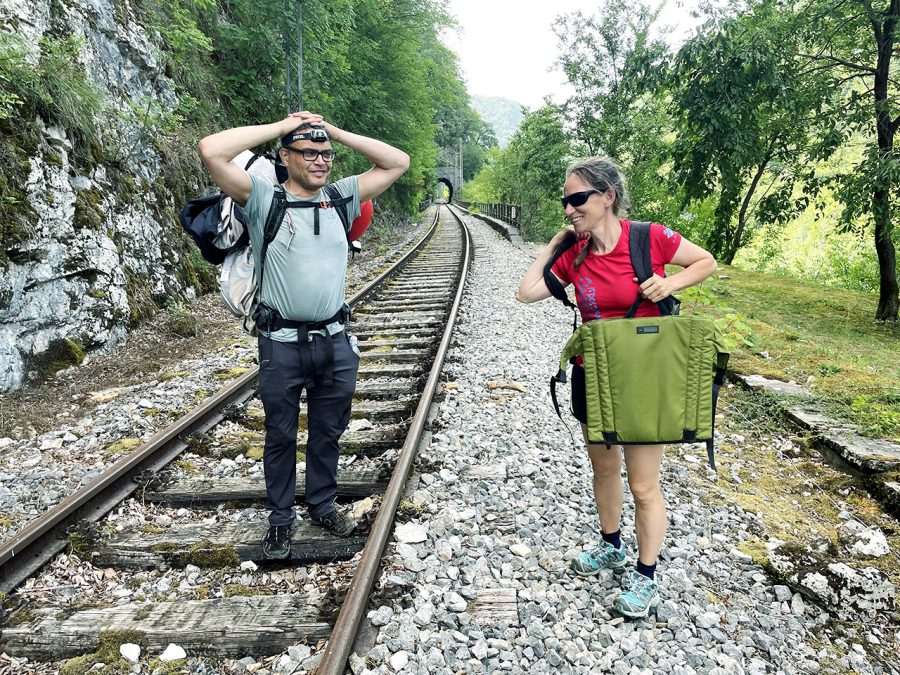
That, however, left us with one problem – we started to run out of drinking water. Remi suggested paddling to the Bosnian side where there seemed to be some kind of restaurant where we should have been able to buy some bottled water (the waterfall is a very popular tourist attraction on the Bosnian side).
But instead, we asked the ‘waterfall owners’, who shared some water with us. “You should not try to cross the border here, as if they catch you, and they will, you can get a fine of several thousand Euro and a few days in jail,” the guy told us. “It is the border of the European union after all.”
And so, we decided to stay at the place for one more night. This time, however, Remi did not want to camp in the woods and proposed to go to an observation platform which was at the end of the hiking trail we saw the day before. He discovered it in the morning, while checking where the trail led. We agreed. The view from there was stunning. The platform was high above the waterfall, and you could also see the canyon and the river from it.
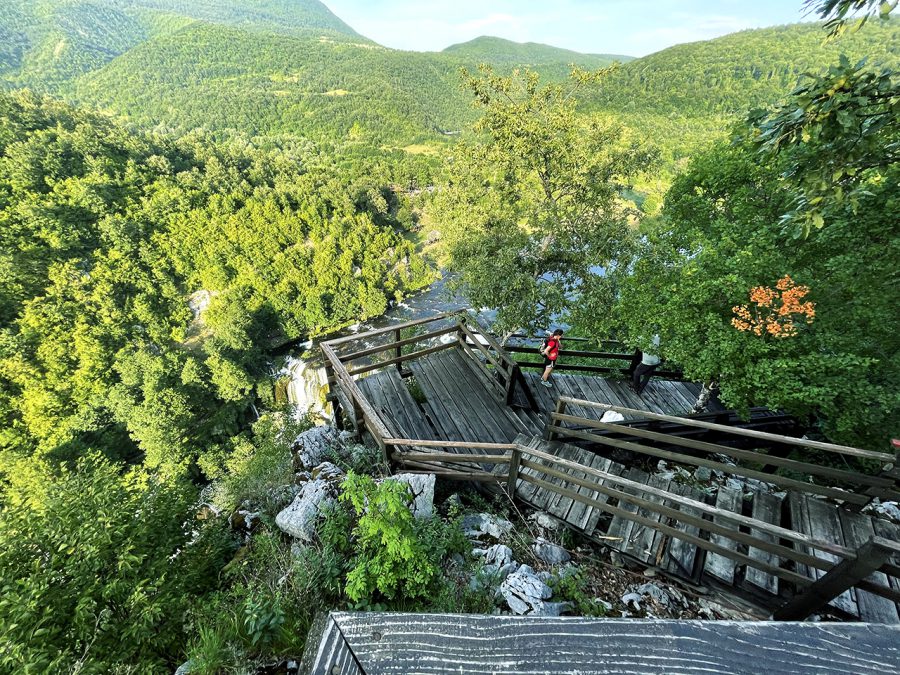
There was only one problem – the platform was made of wooden planks, many of which have rotten away. The same was true about the wooden stairs leading to the platform. Lucky for us, one part of the platform was relatively new and still solid and that was where we set ourselves up. It was truly a unique place to spend the evening eating and talking, sleep under the stars and wake up with the first light the morning after.
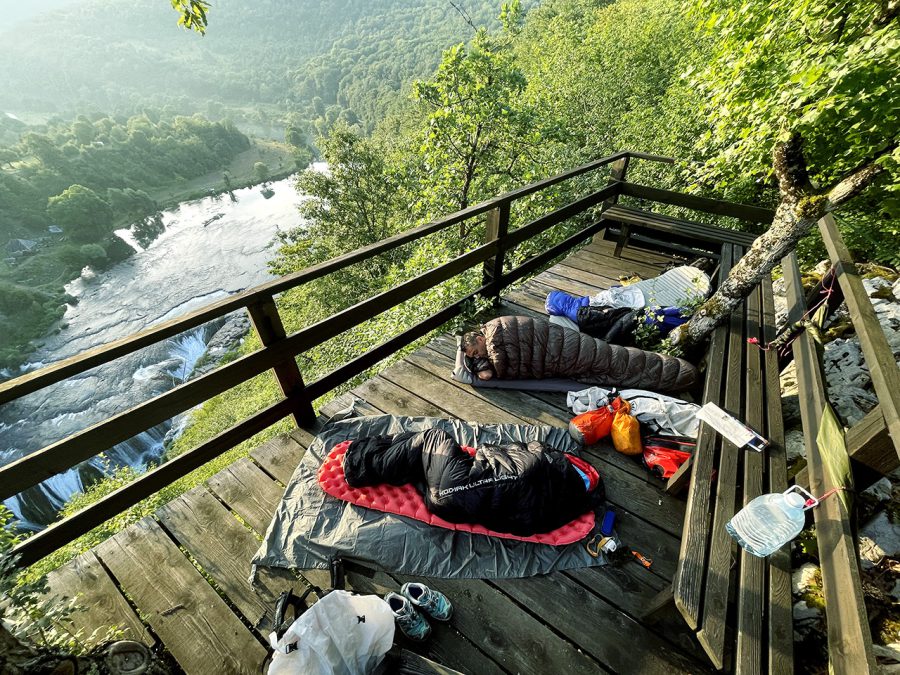
The next morning all three of us went to the river and packrafted the same stretch Remi and I paddled the day before, and even more. This time we knew from the guy where we had to step out (a place called Loskun).
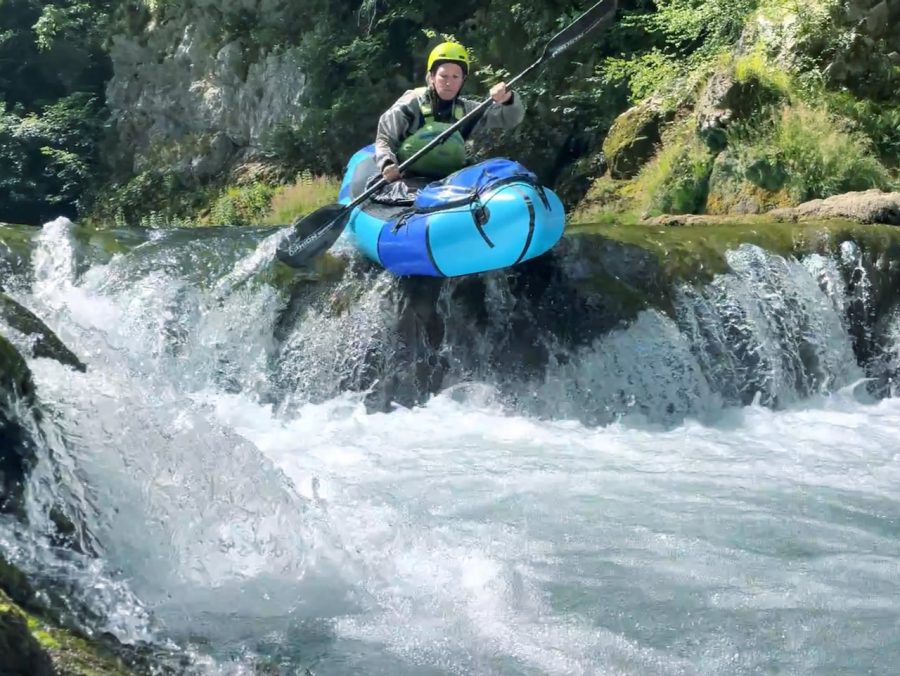
As we did not have to scout as much, we had more time to play. Živa especially was keen on trying to go down each rapid perfectly, which meant that we would run some rapids several times. In the end, it took us the same two hours to get to the takeout which was 6.5 kilometers from the start.
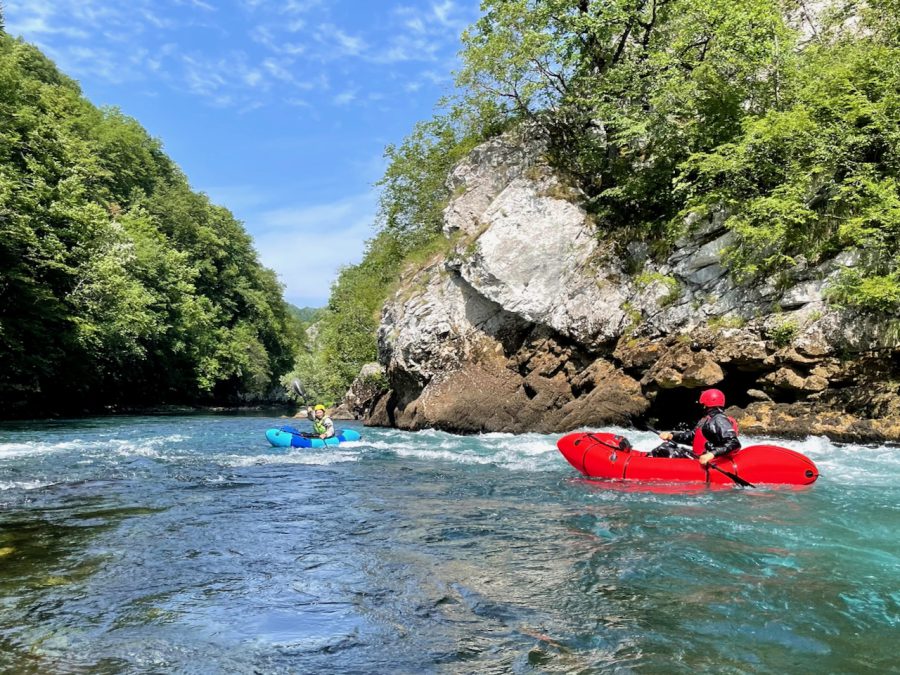
And while it was easier to get to the railway track there as it was almost at the river level, it meant that we had to walk back for a lot longer as well. In addition, the part between where we had stopped the day before and Loskun was not very exciting either (Remi and I thought that we were right stepping out where we had done).
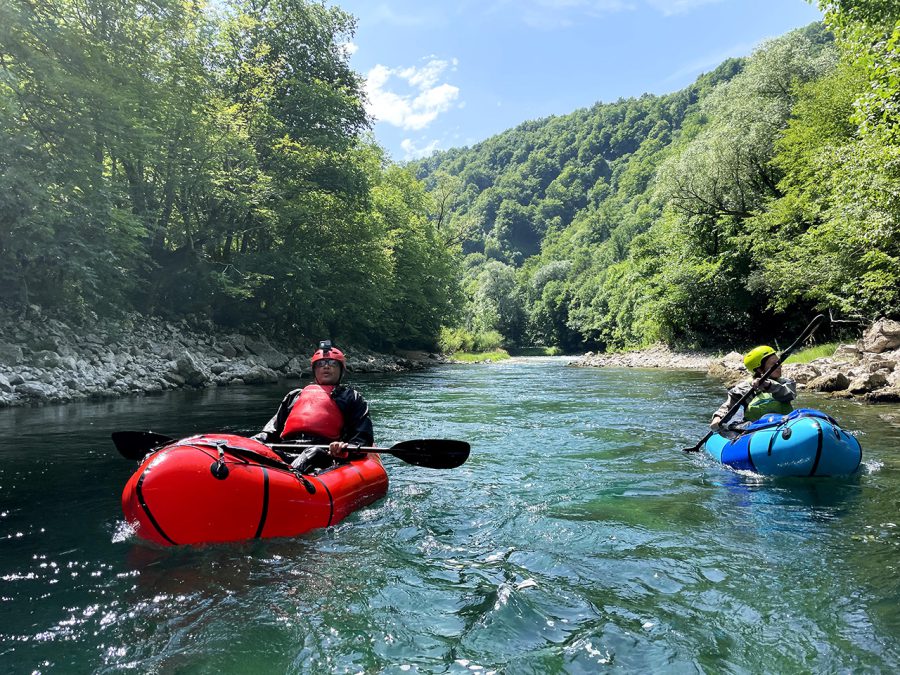
It took us almost two hours and many tunnels (some of which were over a kilometer) to get back to the car. And while this was the end of our Una adventure, it was not the end of our Croatian packrafting adventure. To be continued…
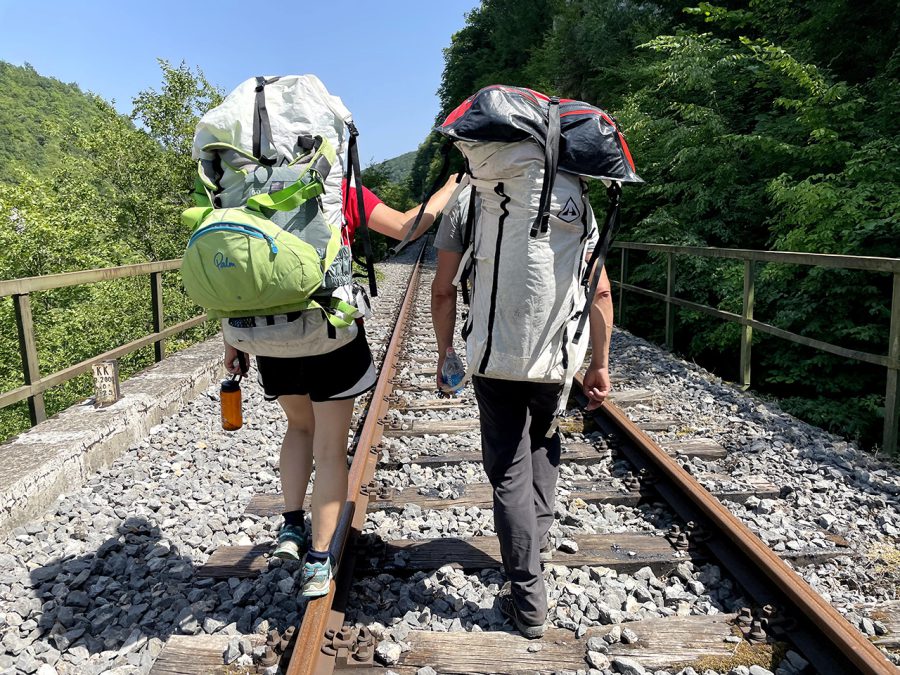
- « 前へ
- 2 / 2
- 次へ »
TAGS:

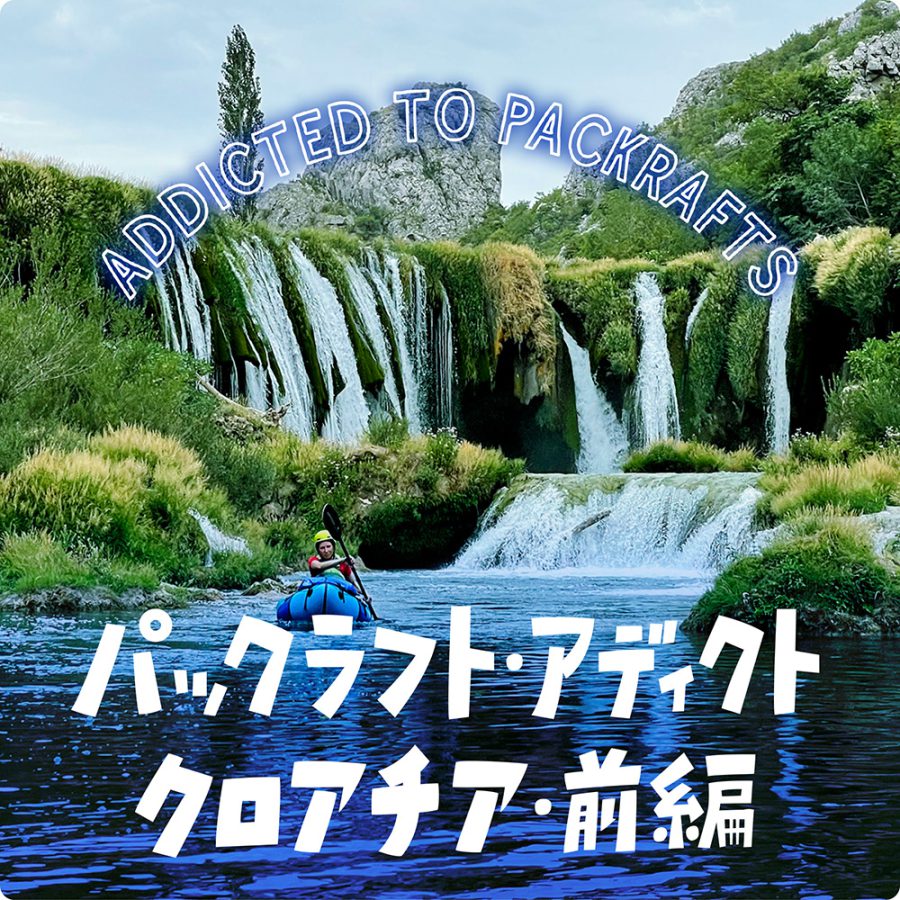
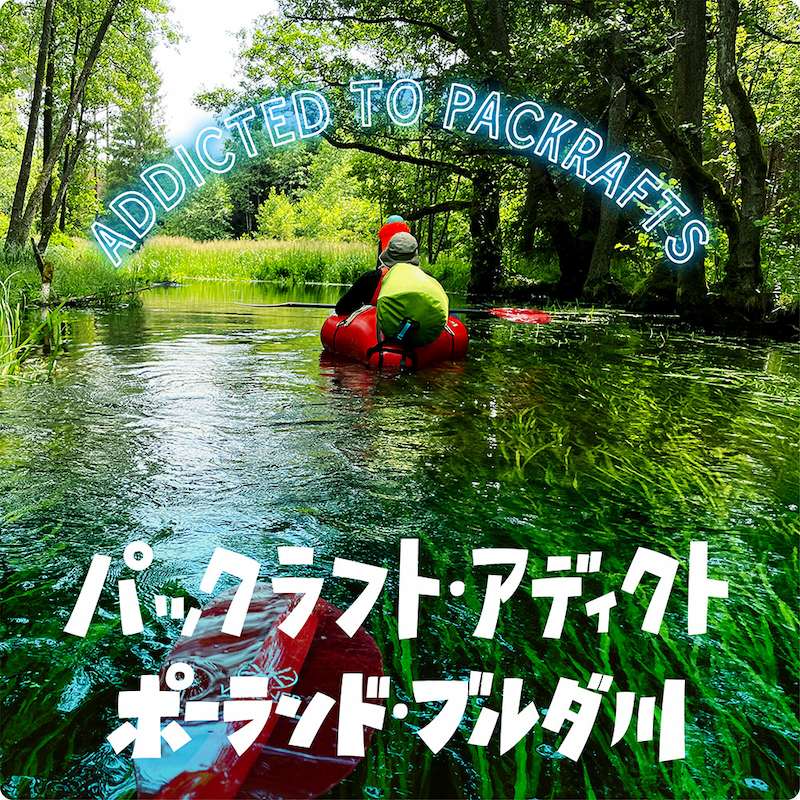

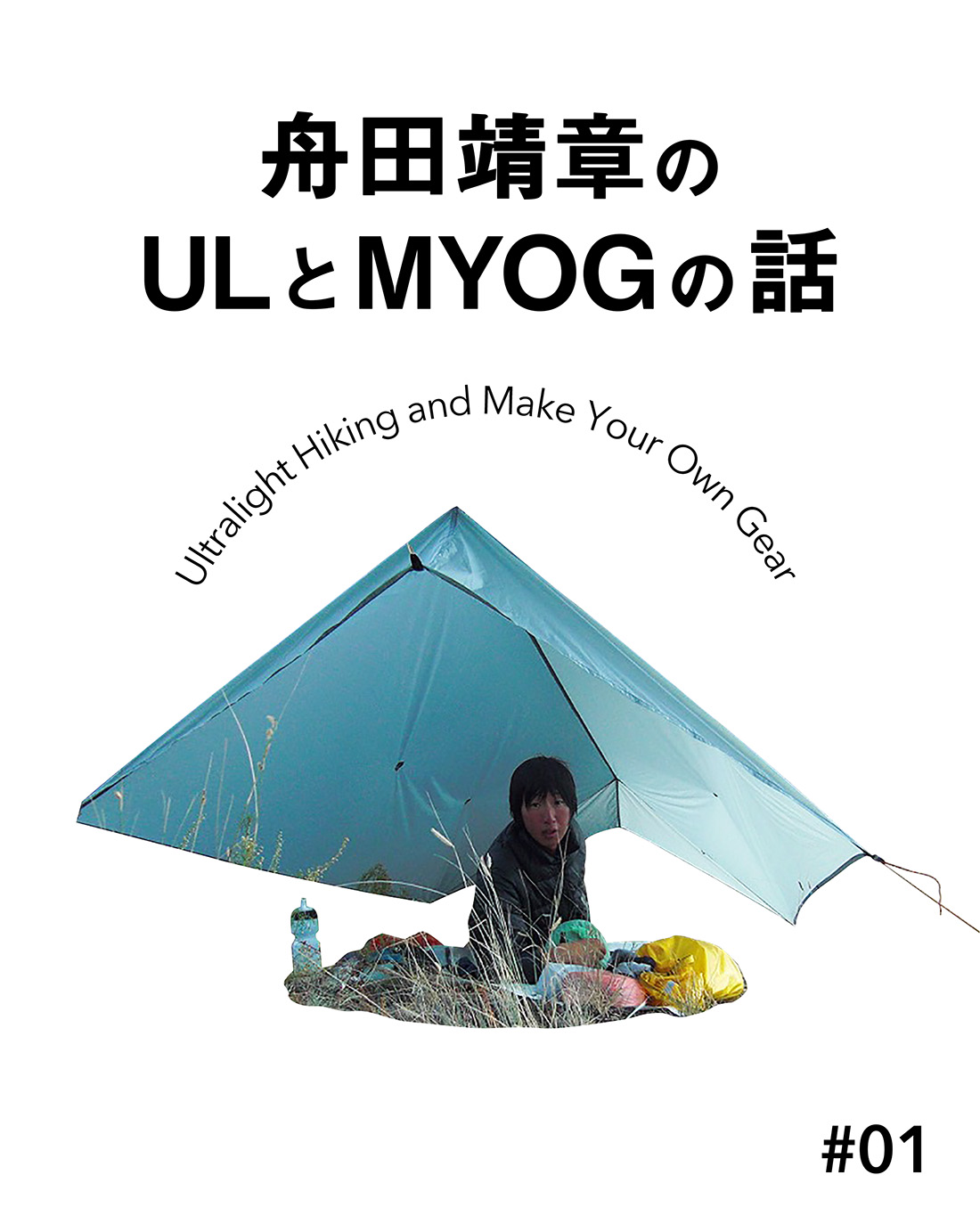
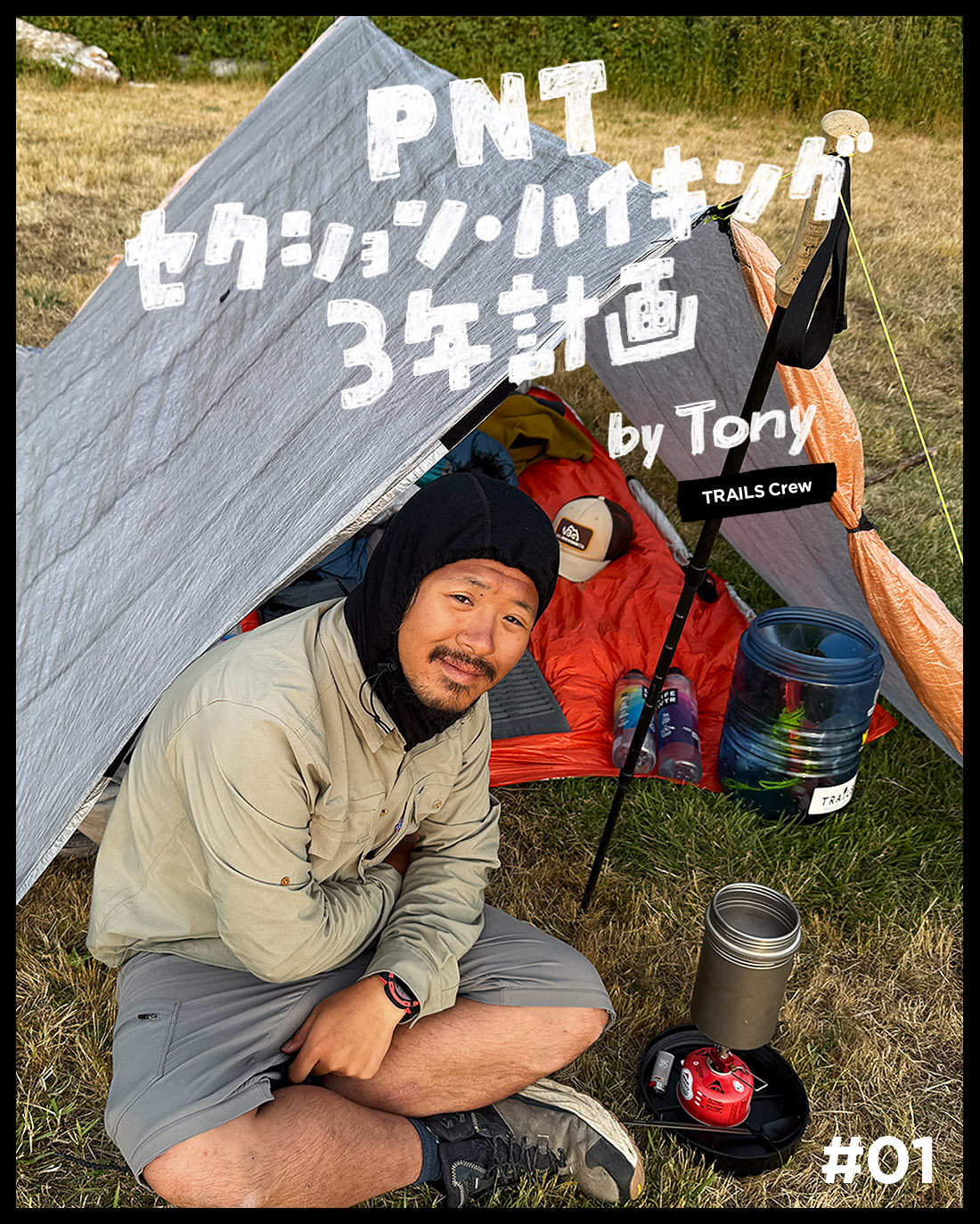
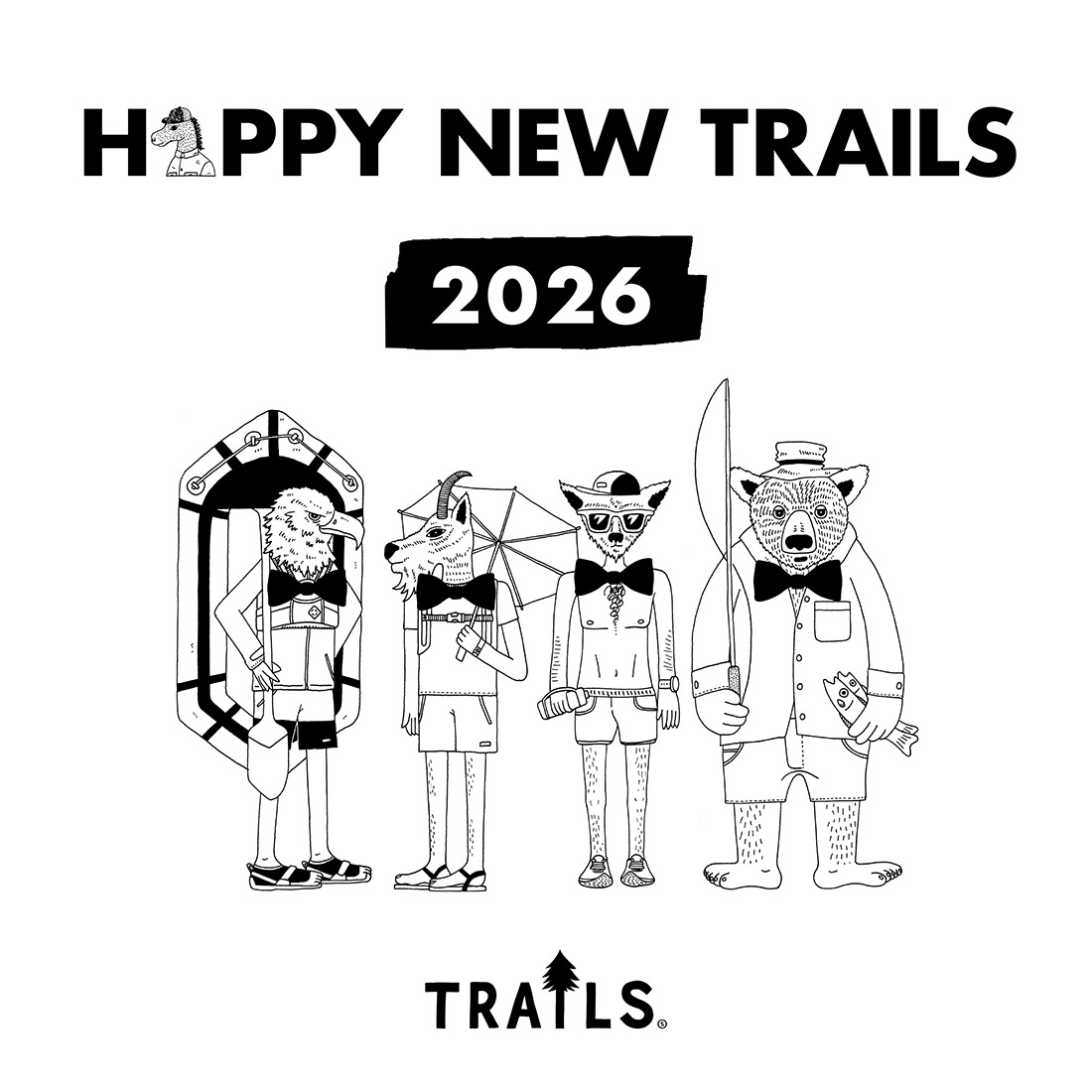
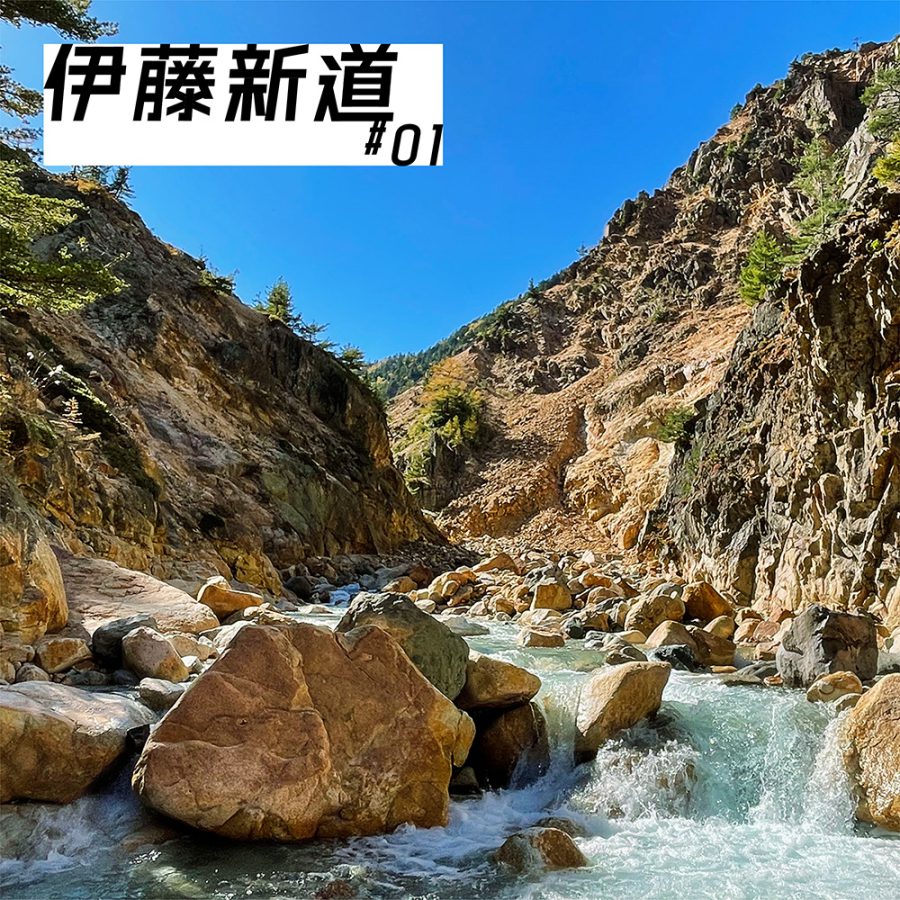
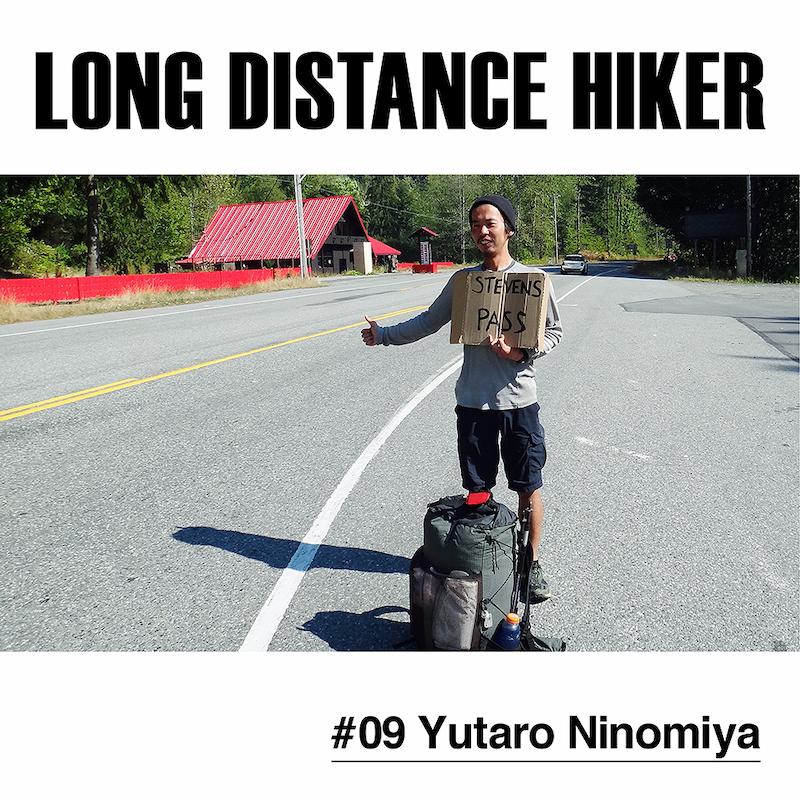
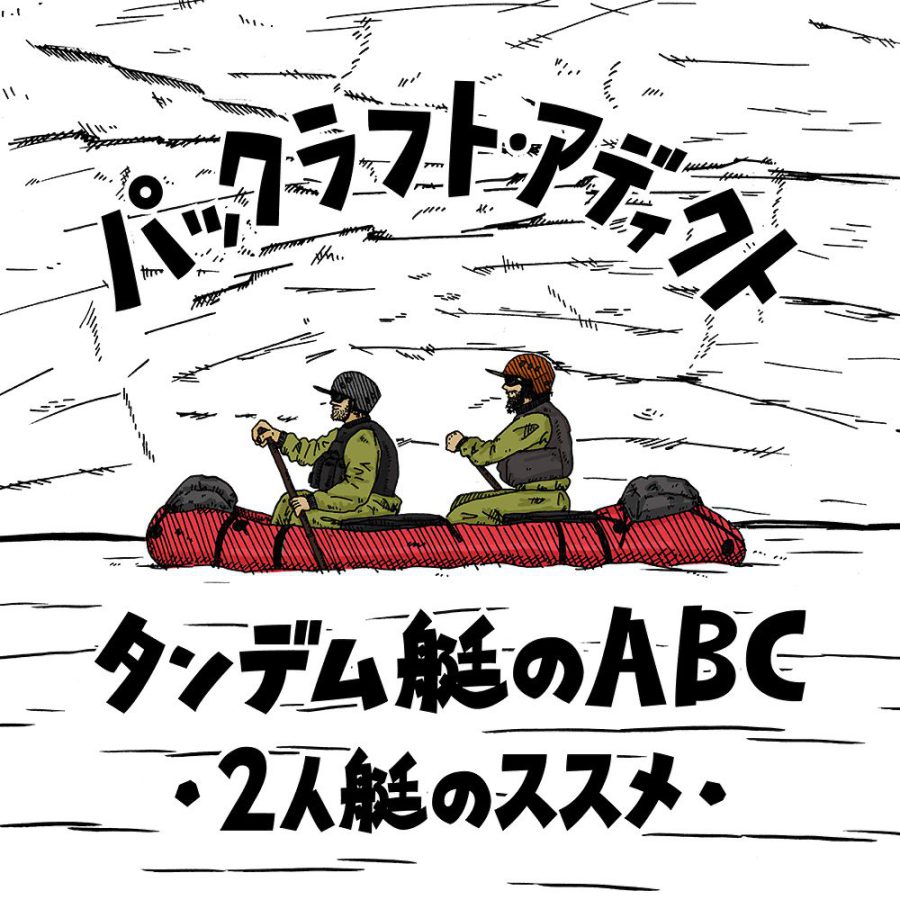
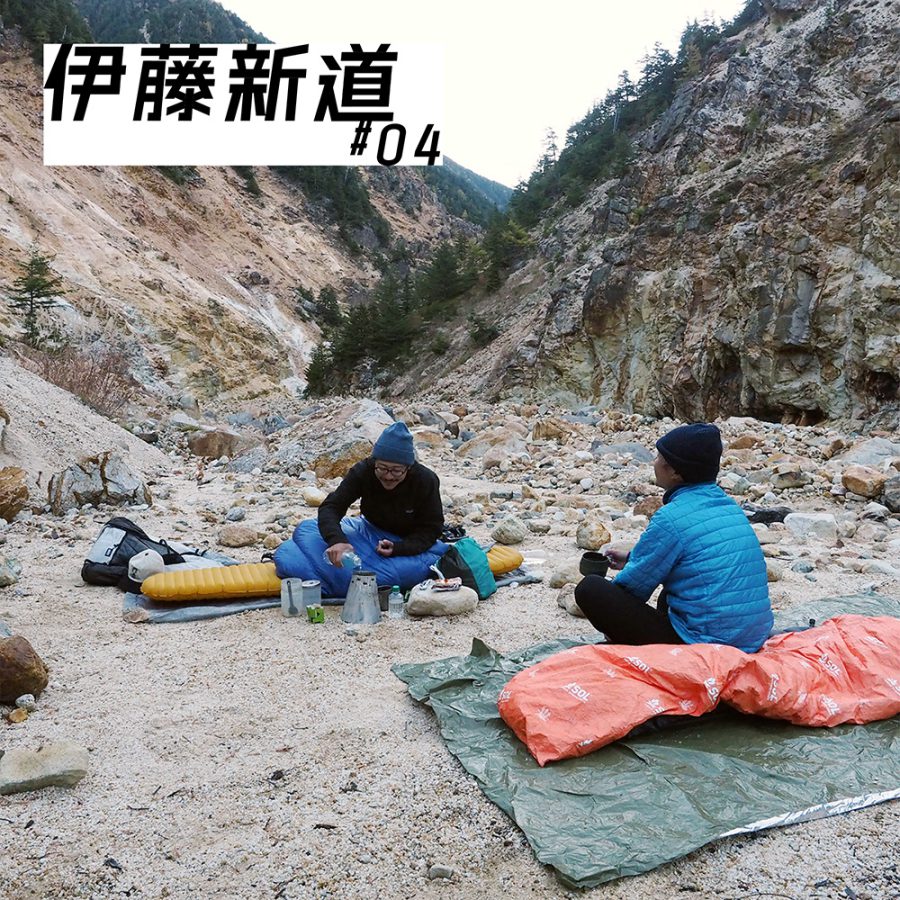
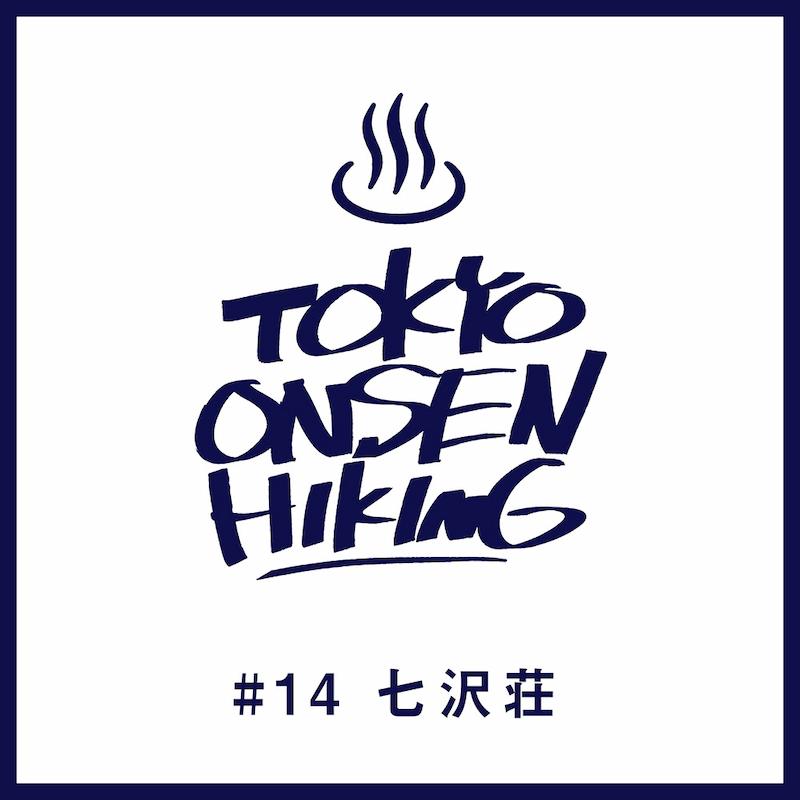

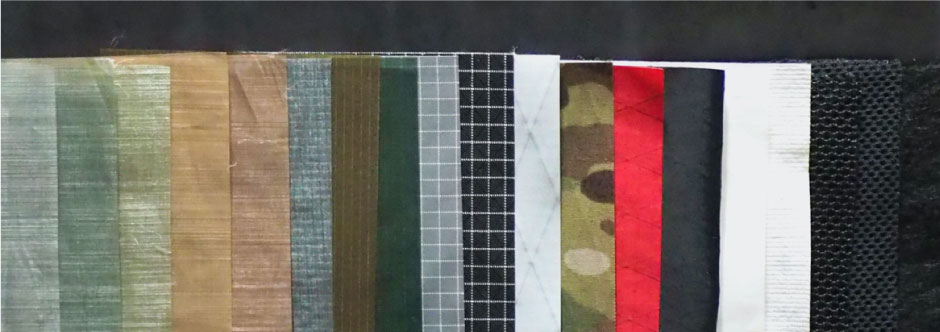
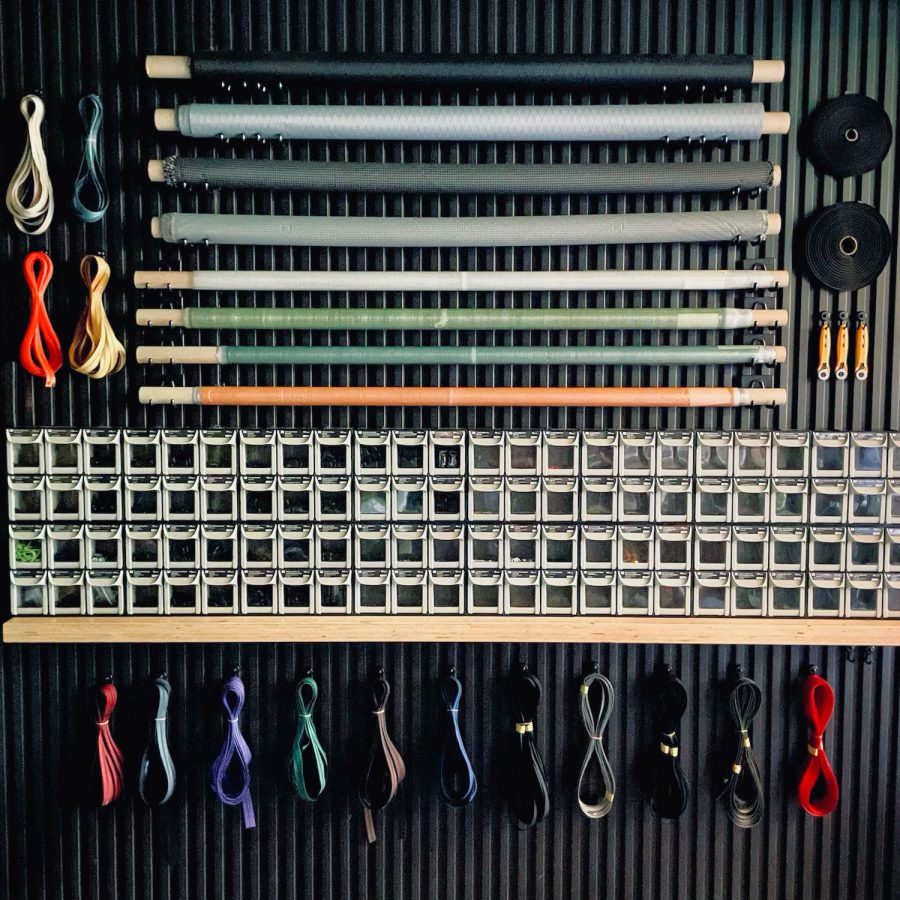 ULギアを自作するための生地、プラパーツ、ジッパー…
ULギアを自作するための生地、プラパーツ、ジッパー… 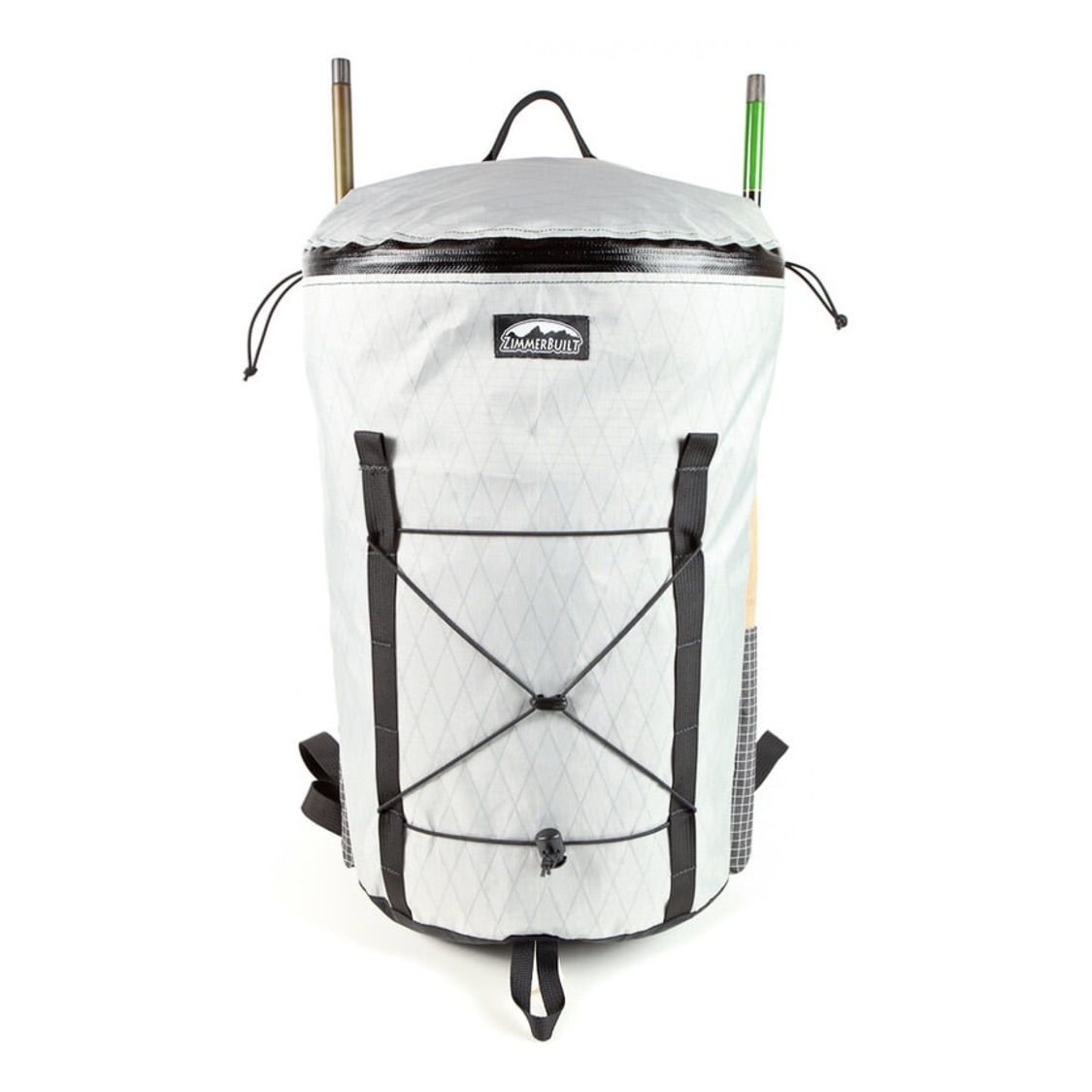 ZimmerBuilt | TailWater P…
ZimmerBuilt | TailWater P… 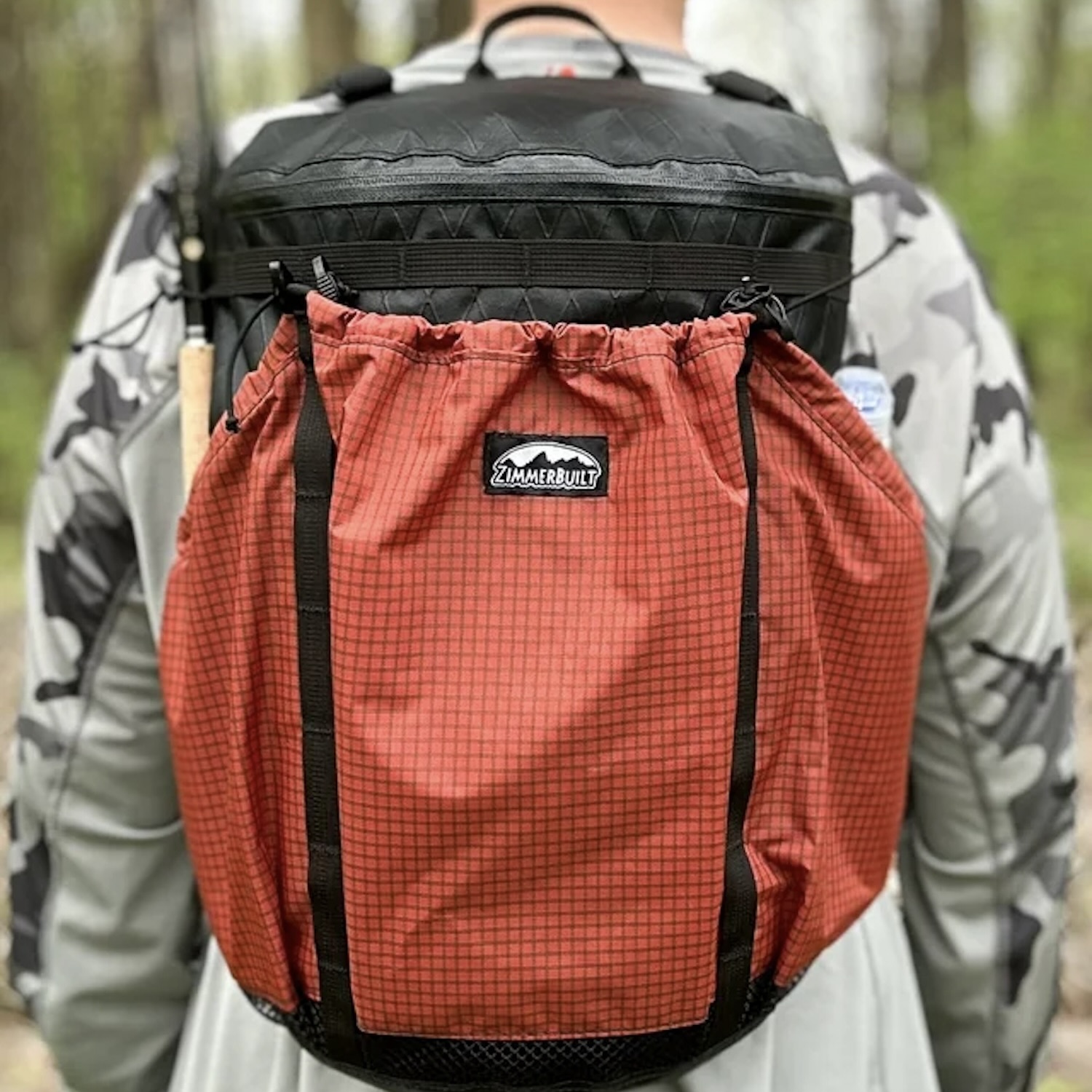 ZimmerBuilt | PocketWater…
ZimmerBuilt | PocketWater… 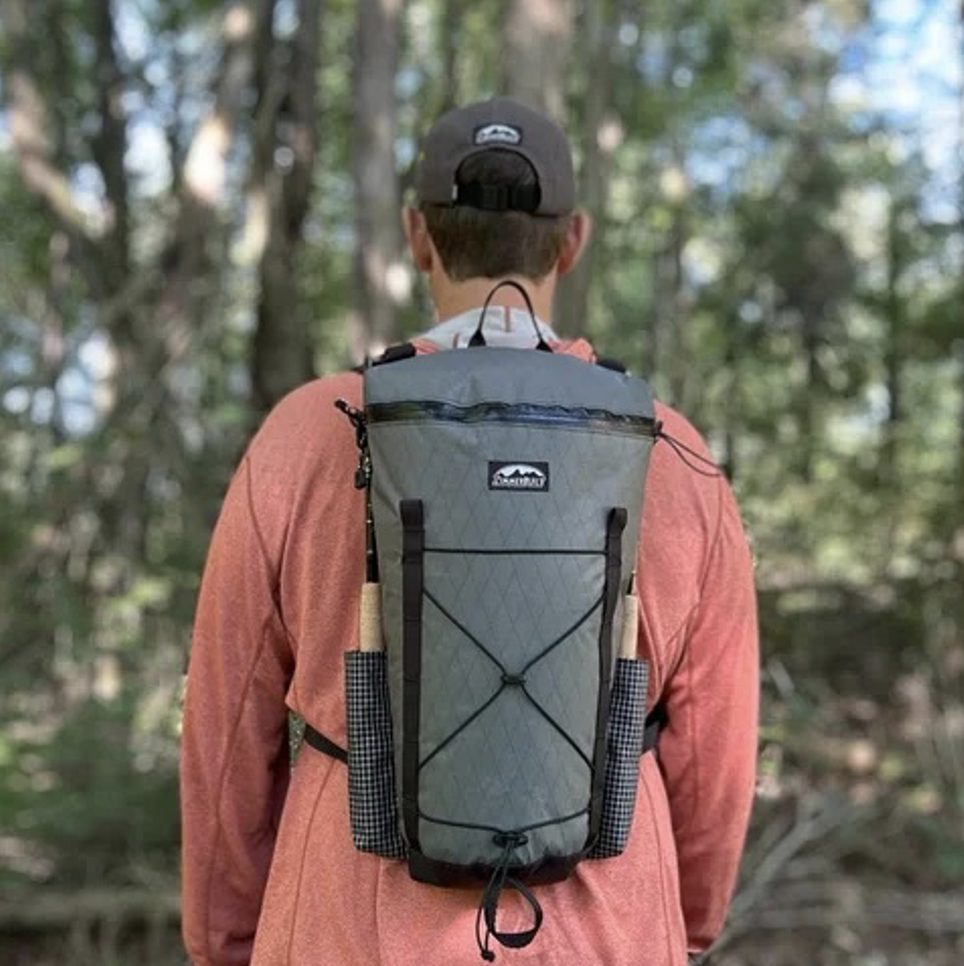 ZimmerBuilt | DeadDrift P…
ZimmerBuilt | DeadDrift P… 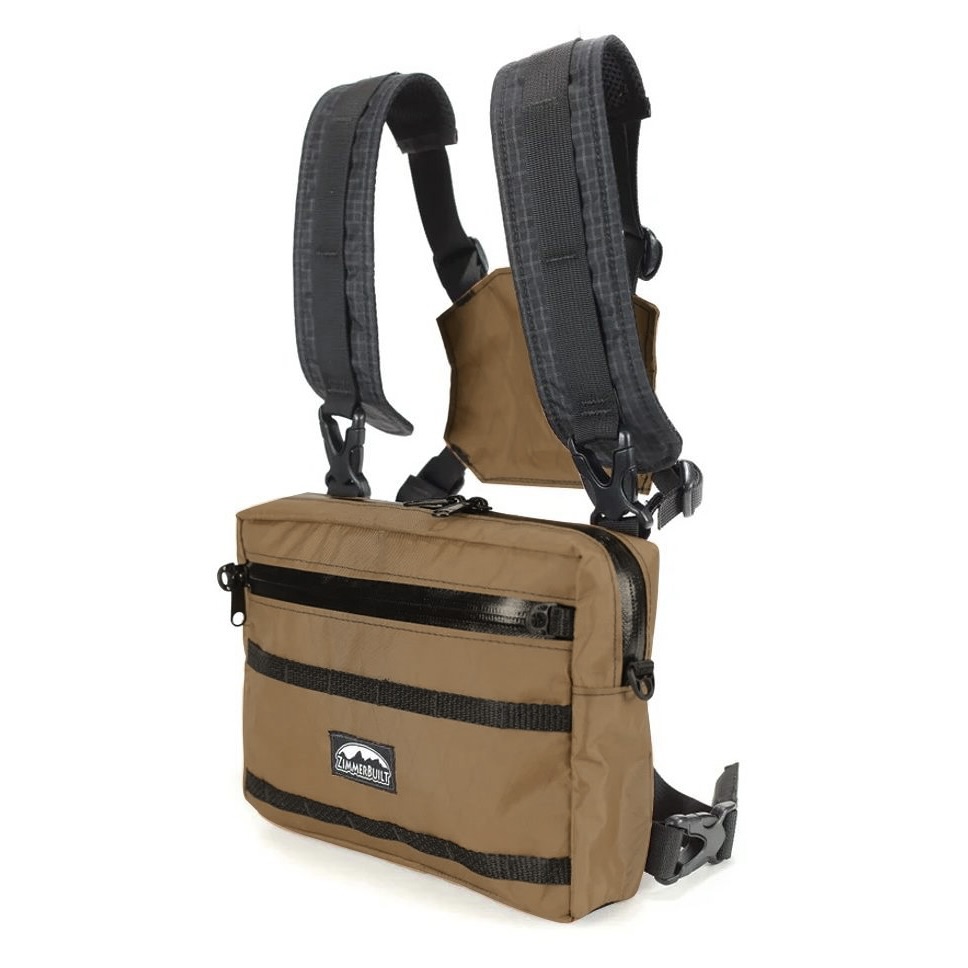 ZimmerBuilt | Arrowood Ch…
ZimmerBuilt | Arrowood Ch… 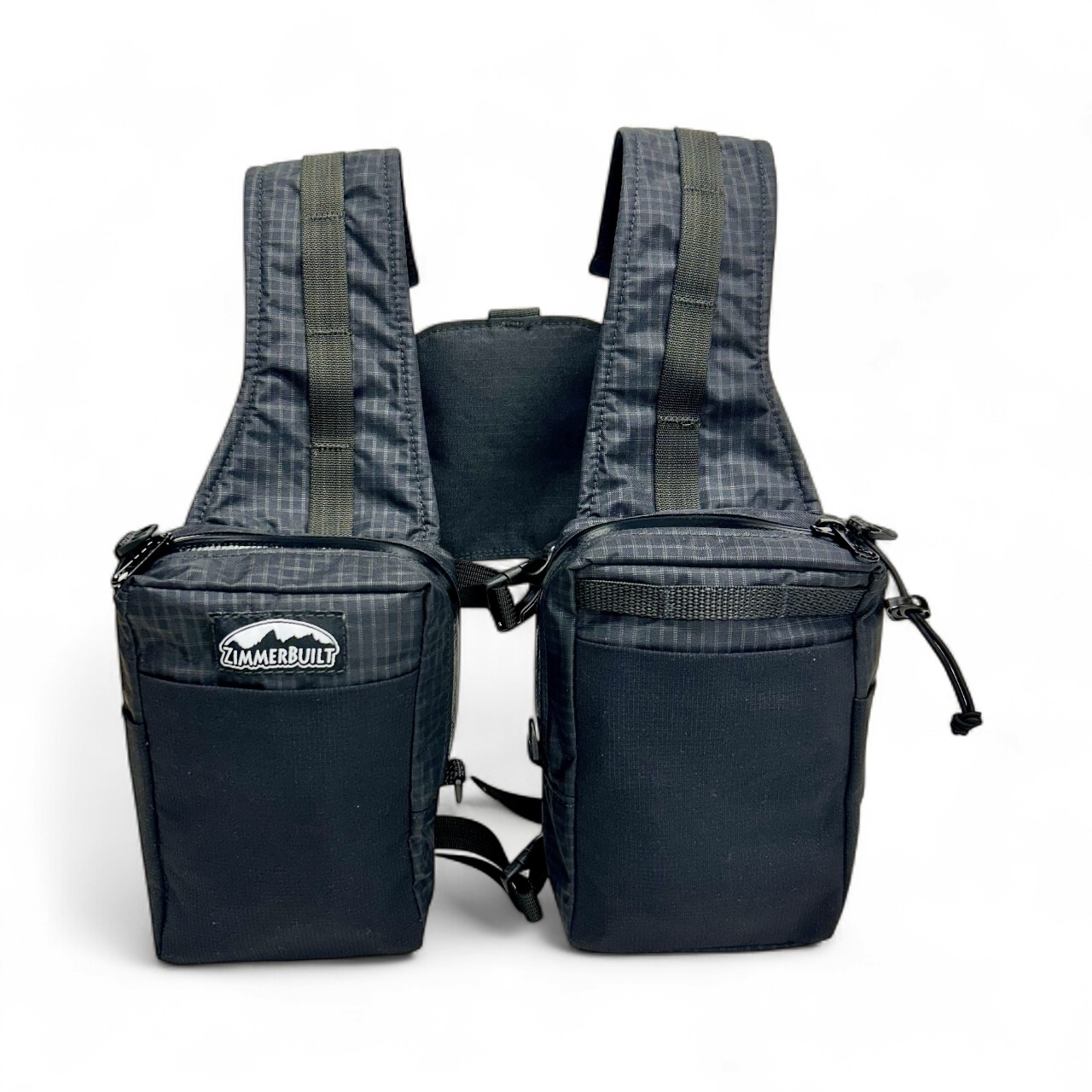 ZimmerBuilt | SplitShot C…
ZimmerBuilt | SplitShot C… 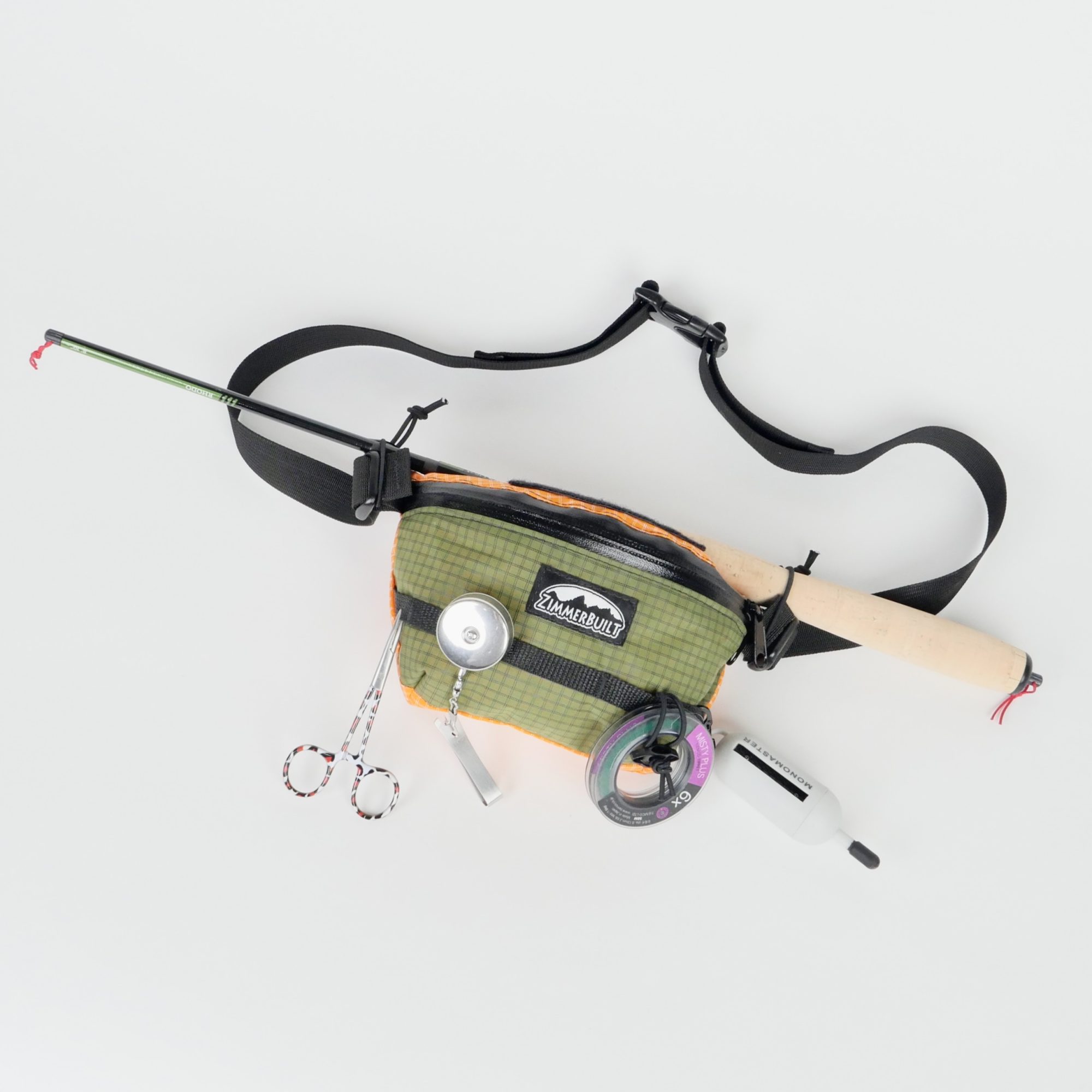 ZimmerBuilt | Darter Pack…
ZimmerBuilt | Darter Pack… 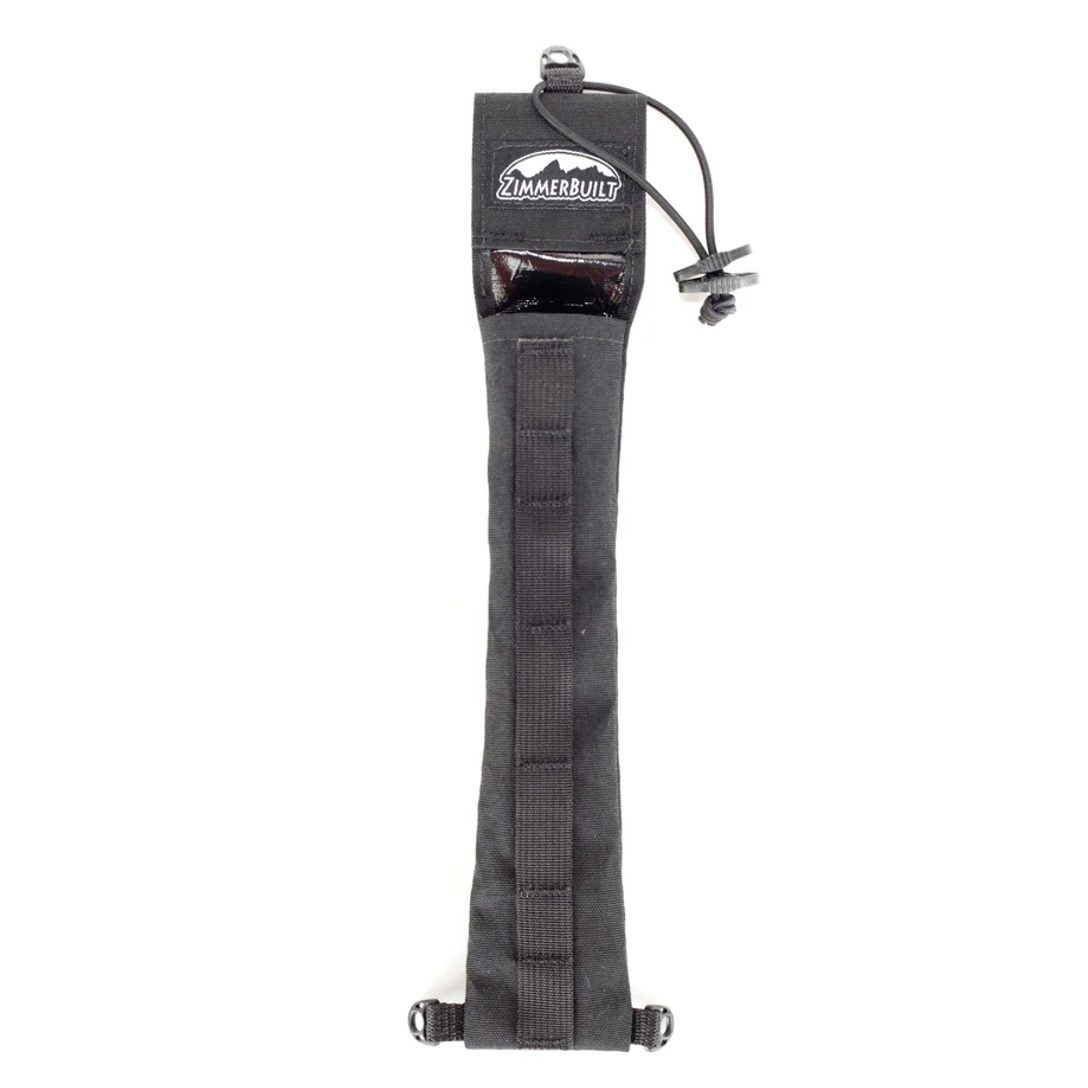 ZimmerBuilt | QuickDraw (…
ZimmerBuilt | QuickDraw (… 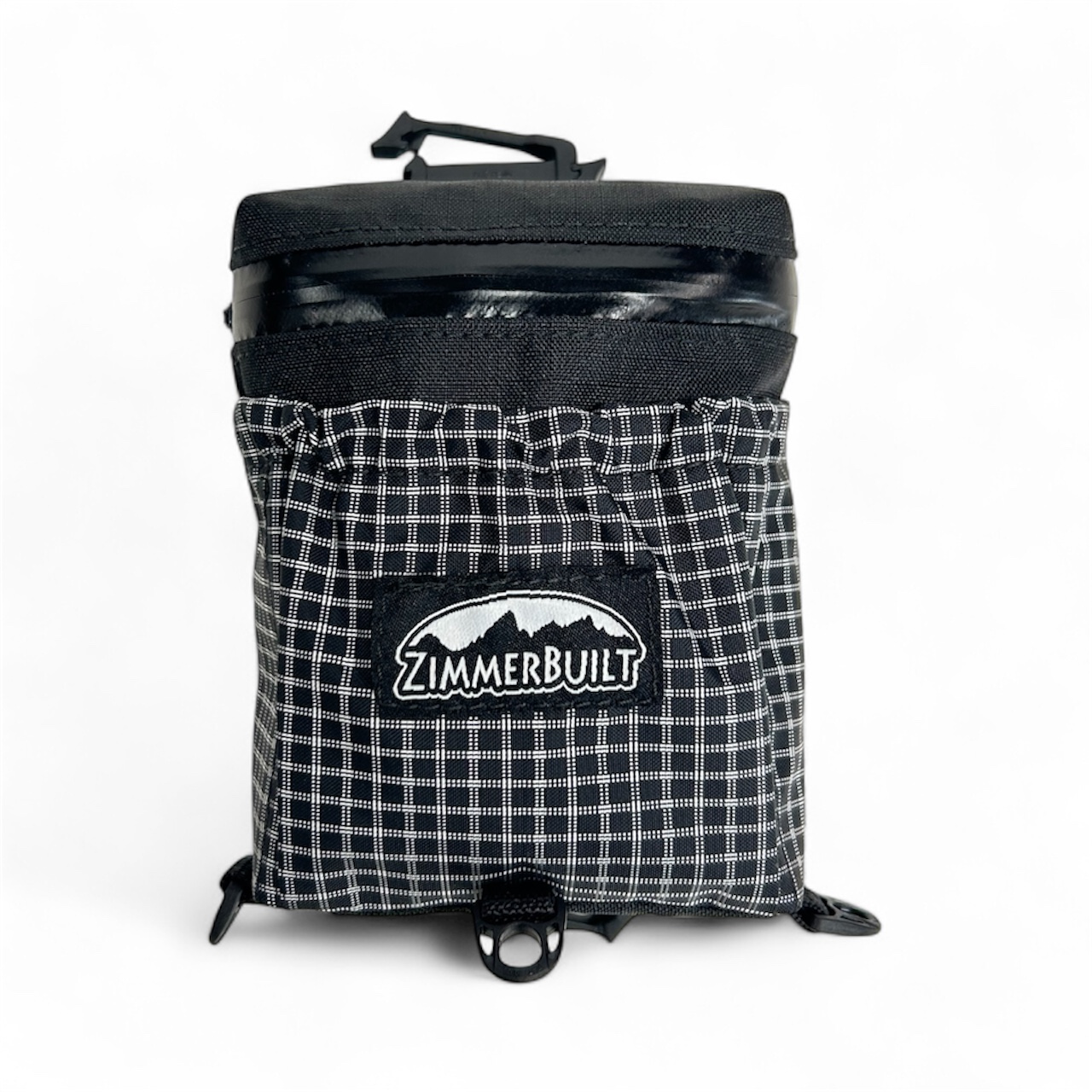 ZimmerBuilt | Strap Pack …
ZimmerBuilt | Strap Pack … 